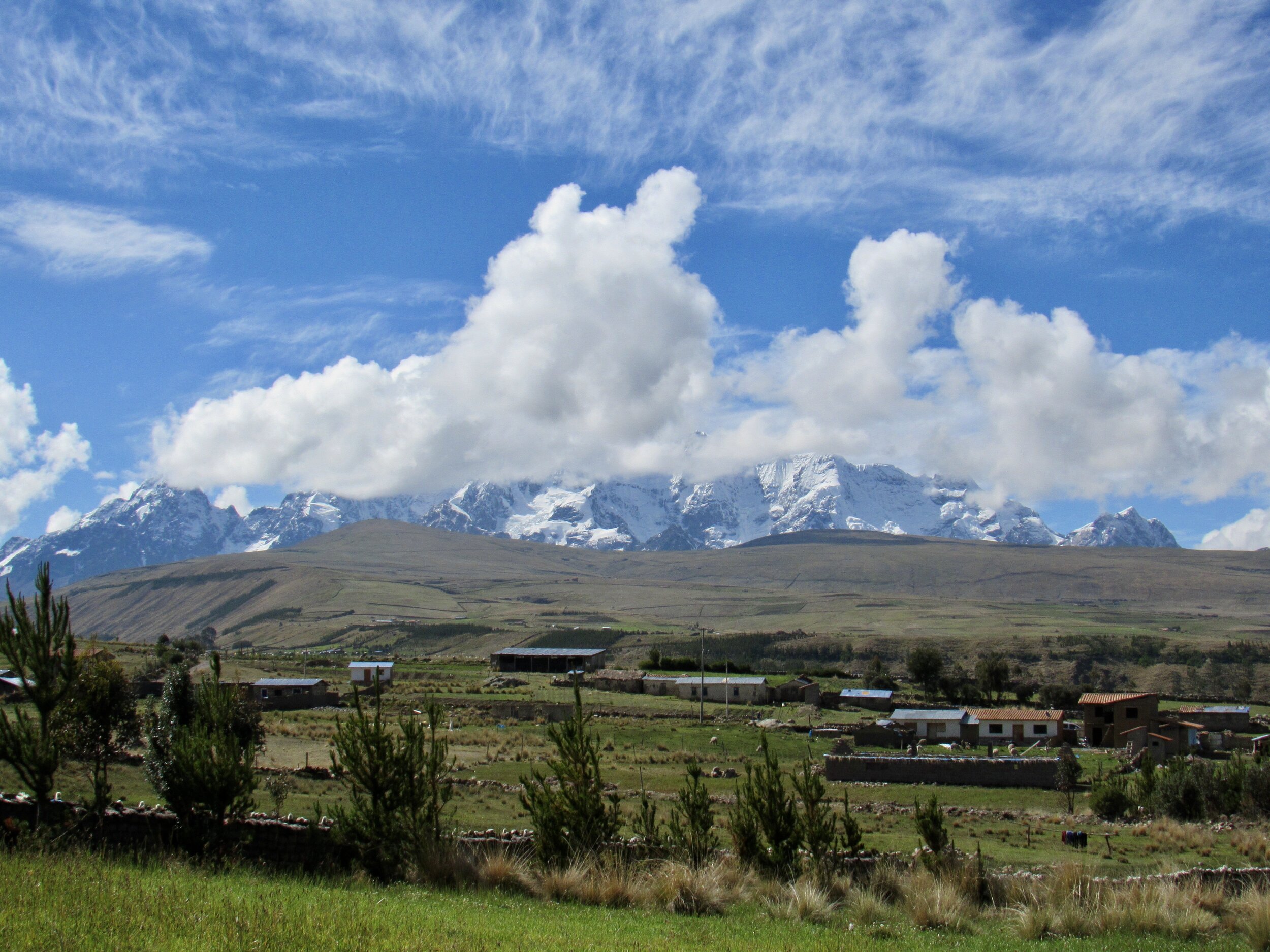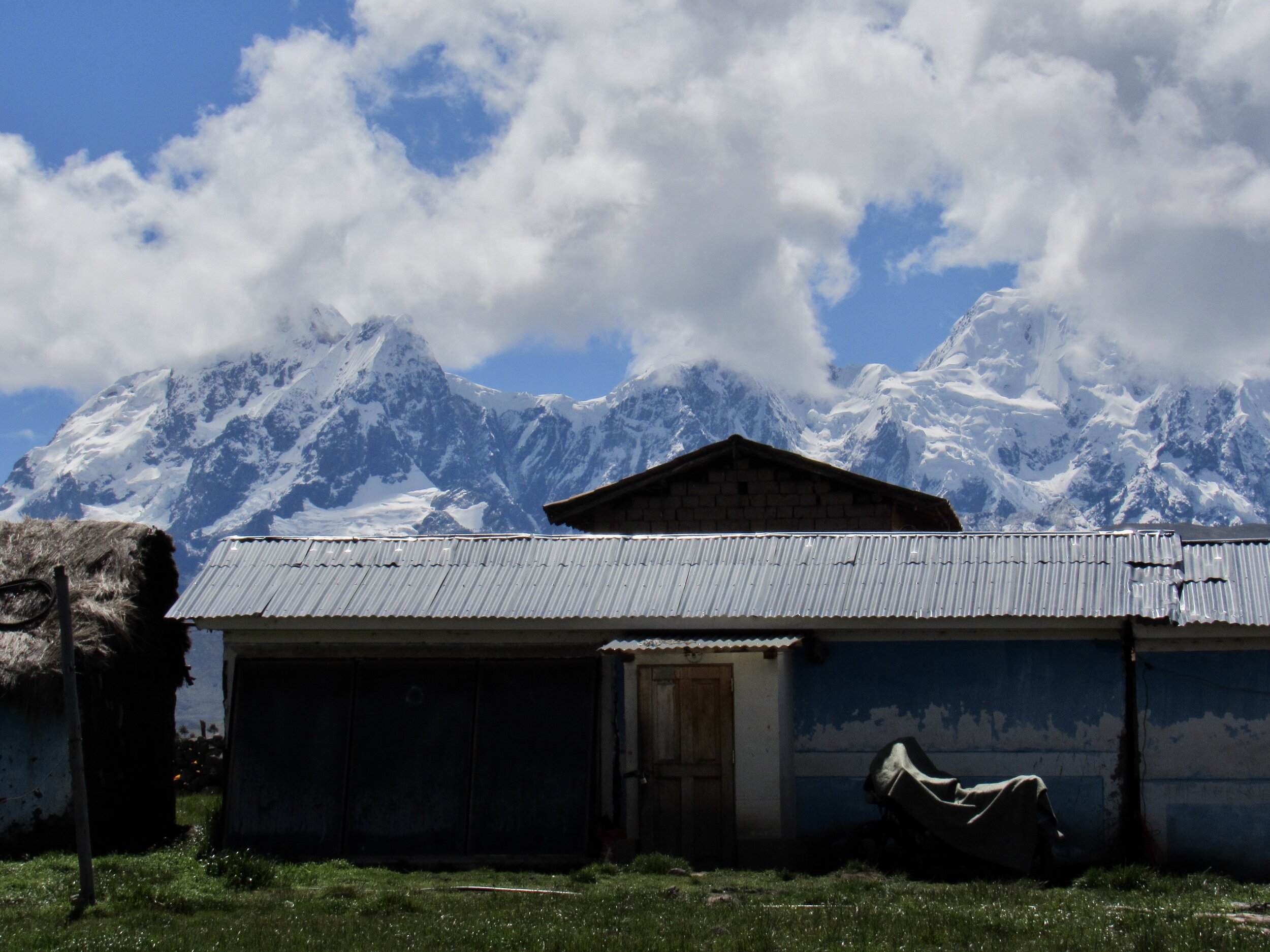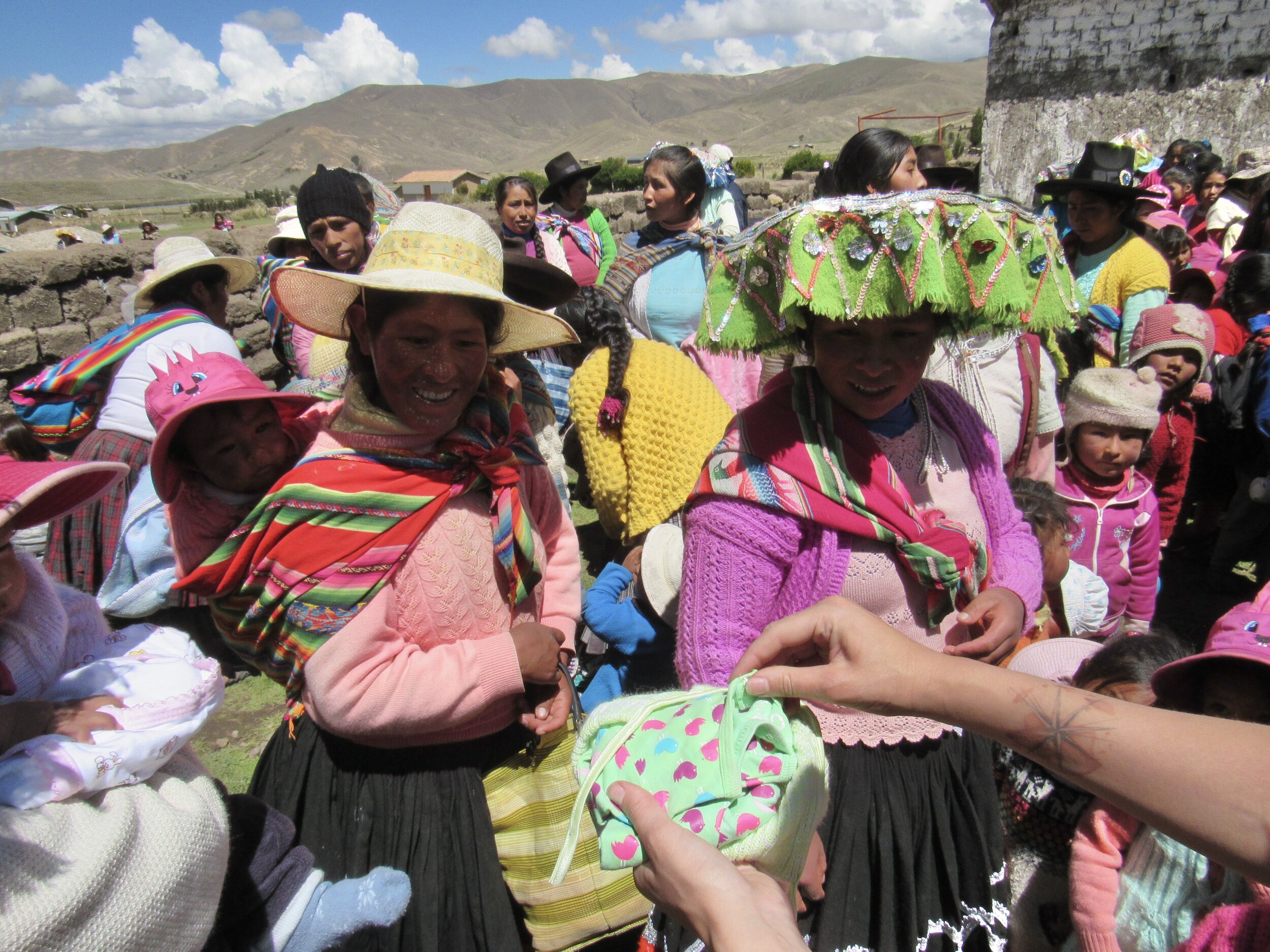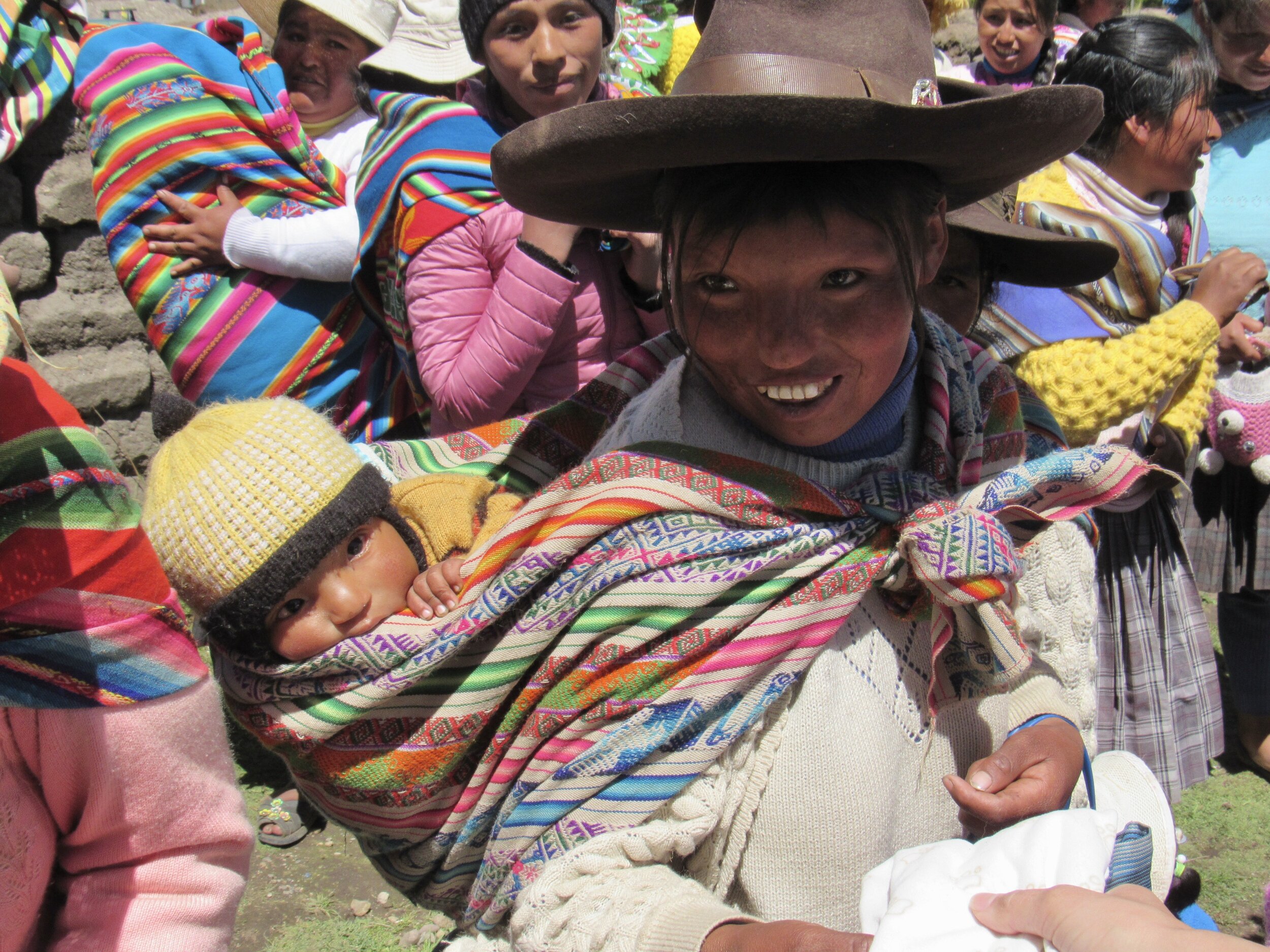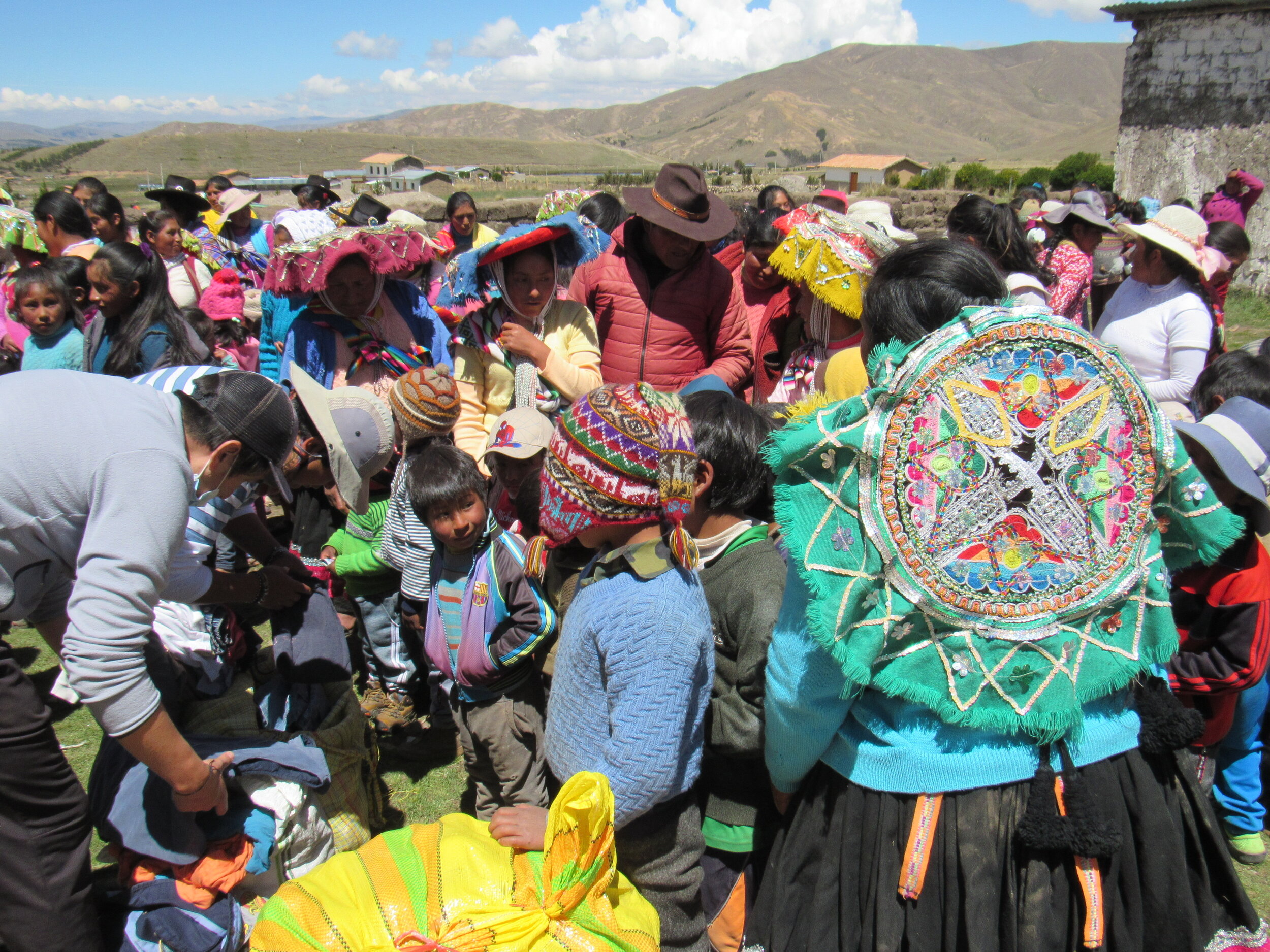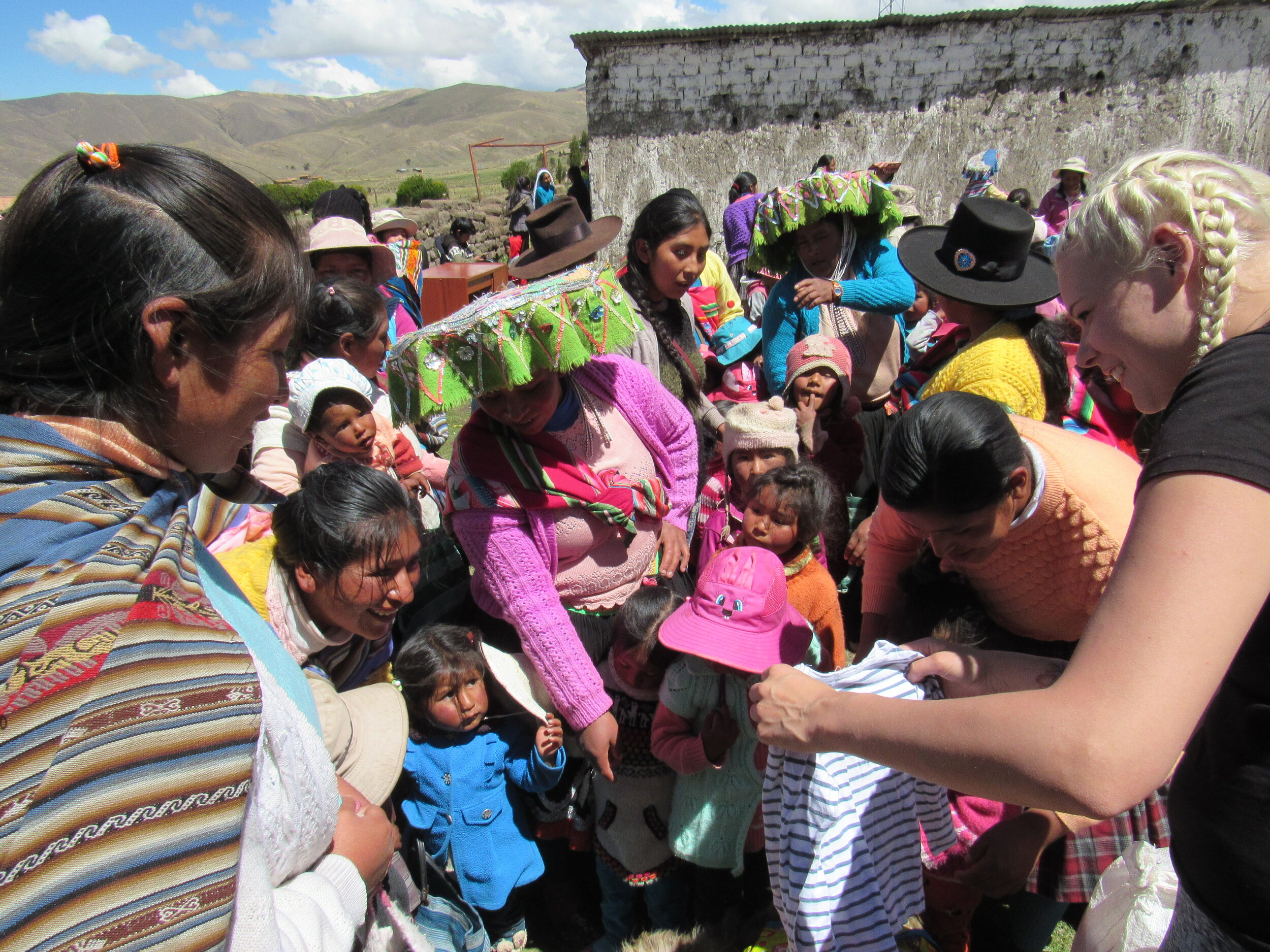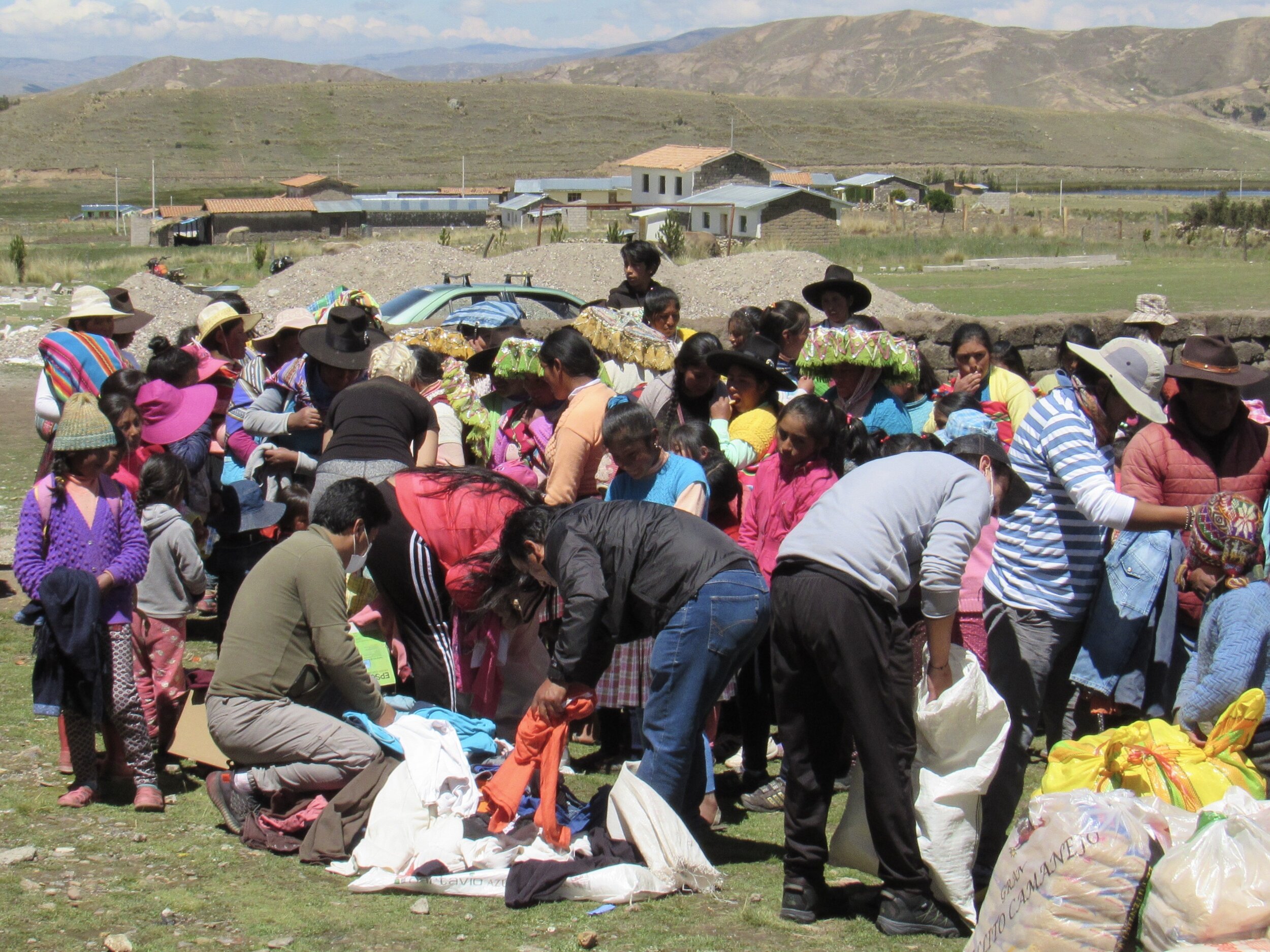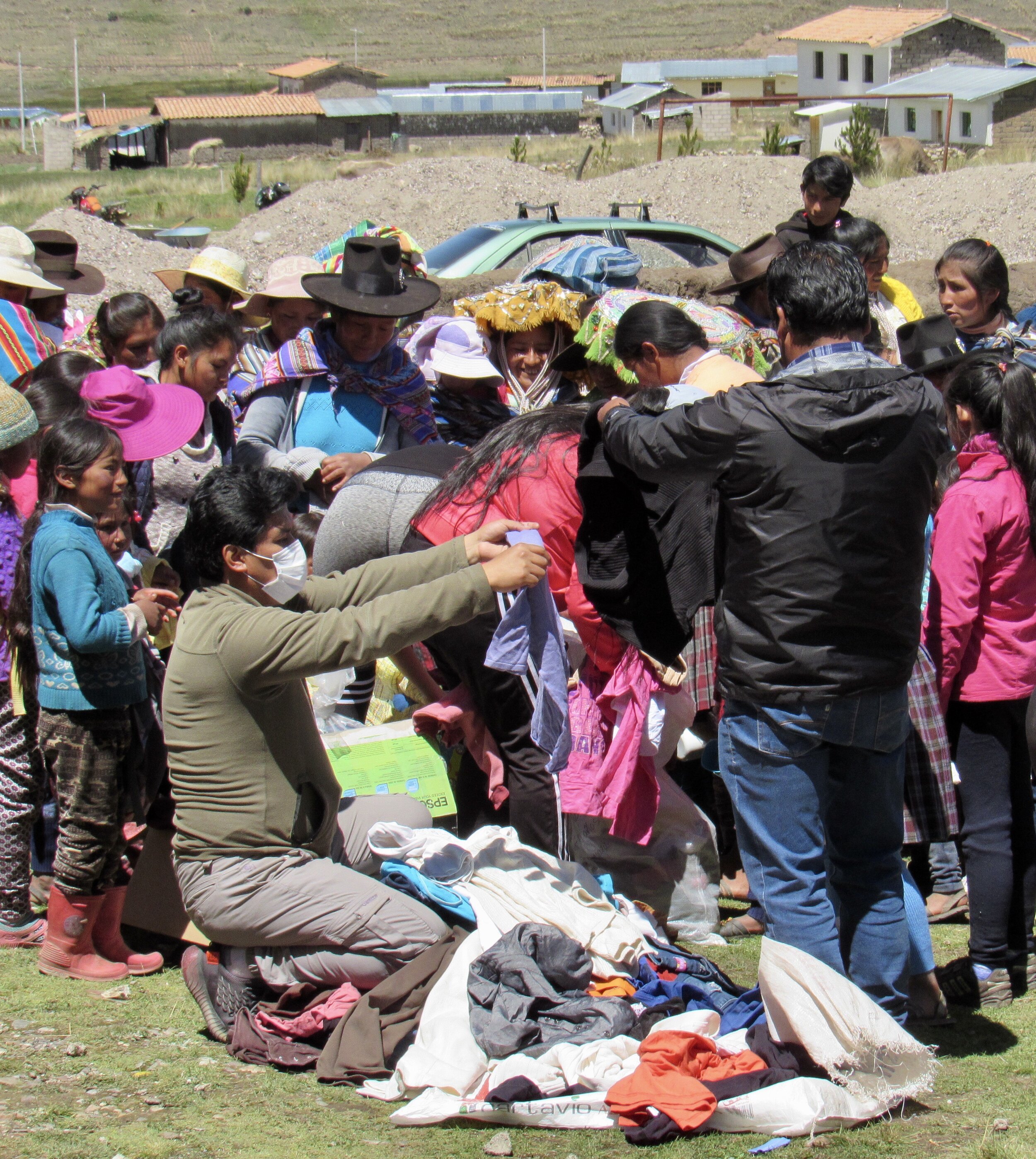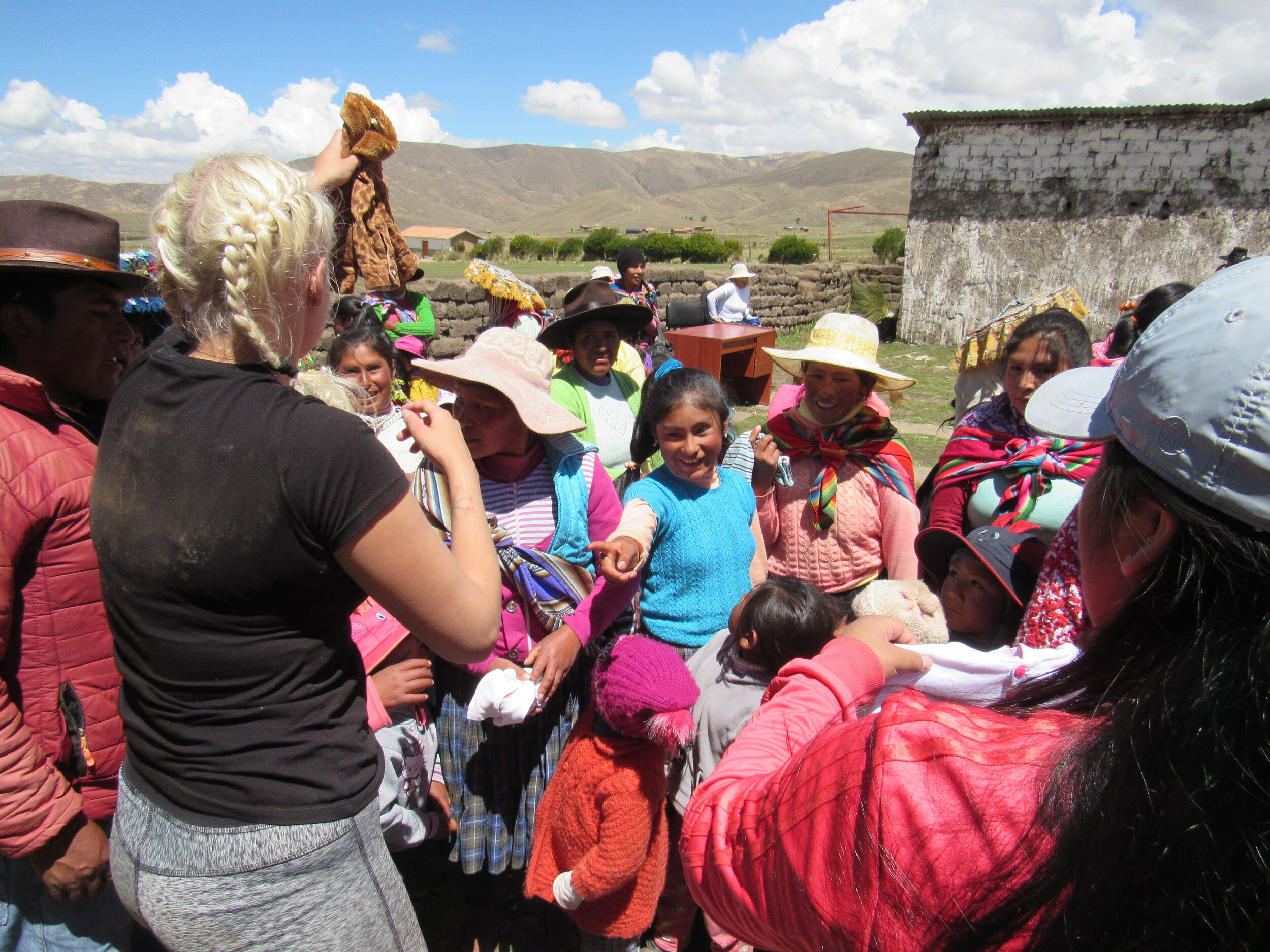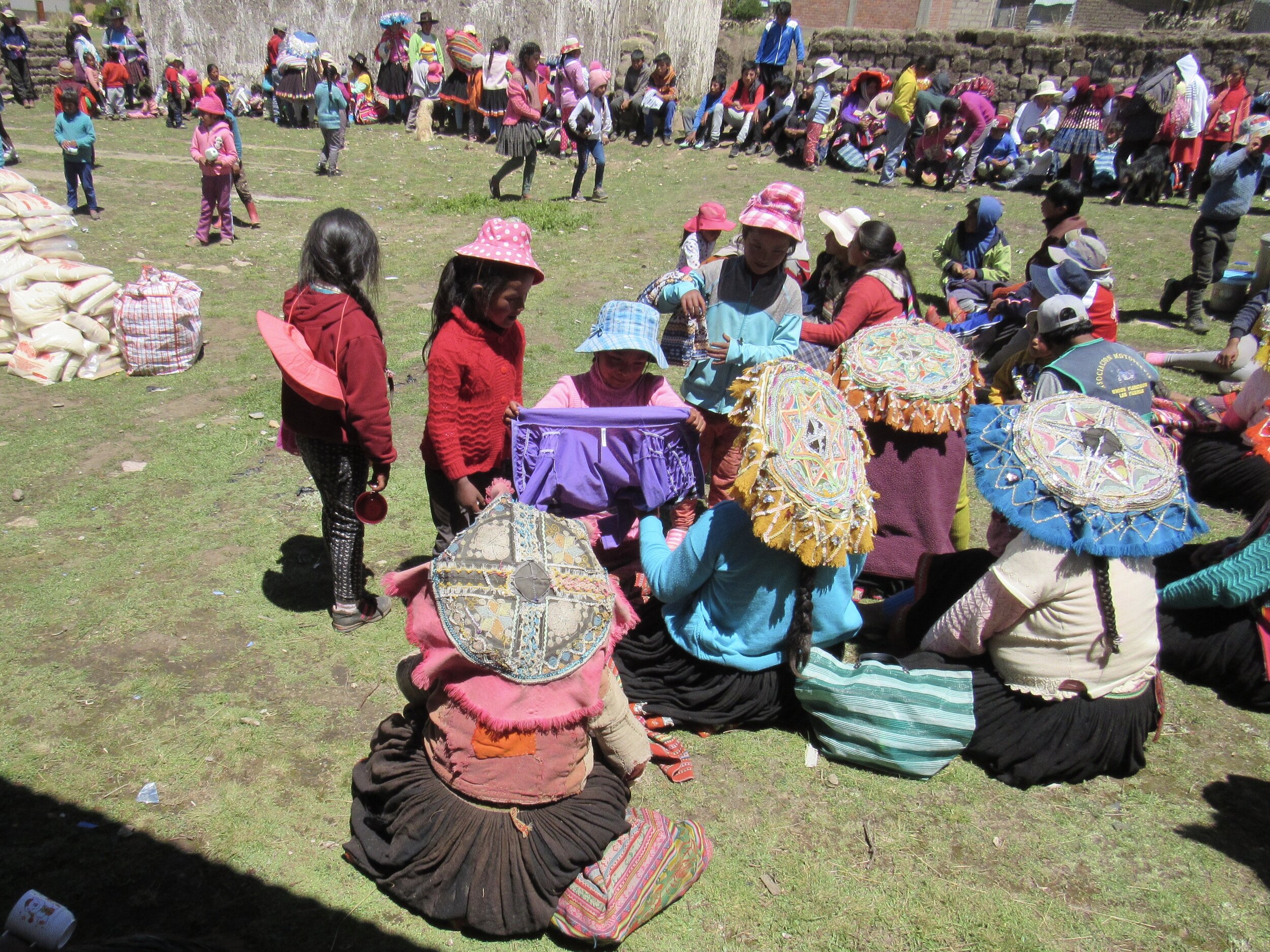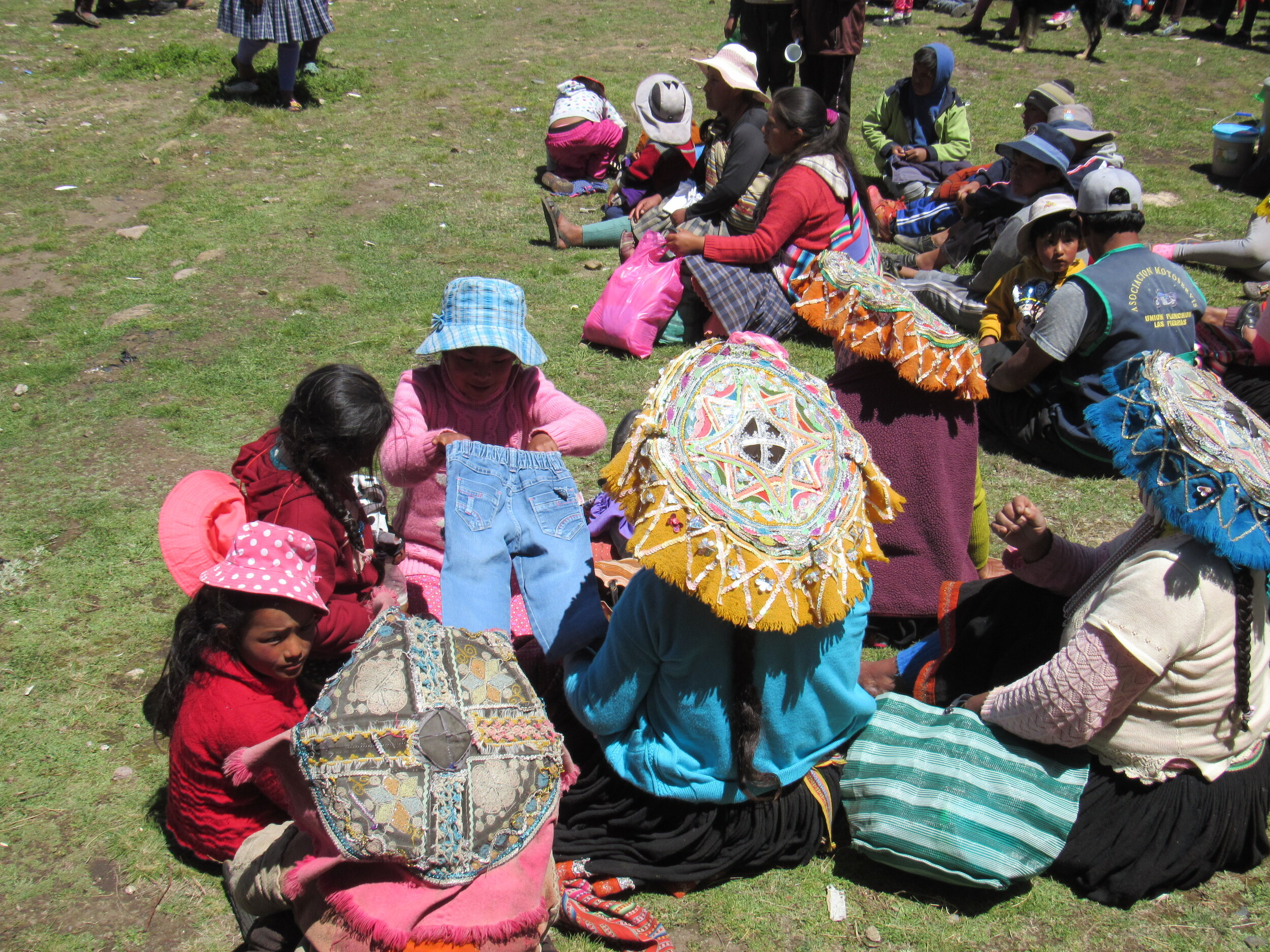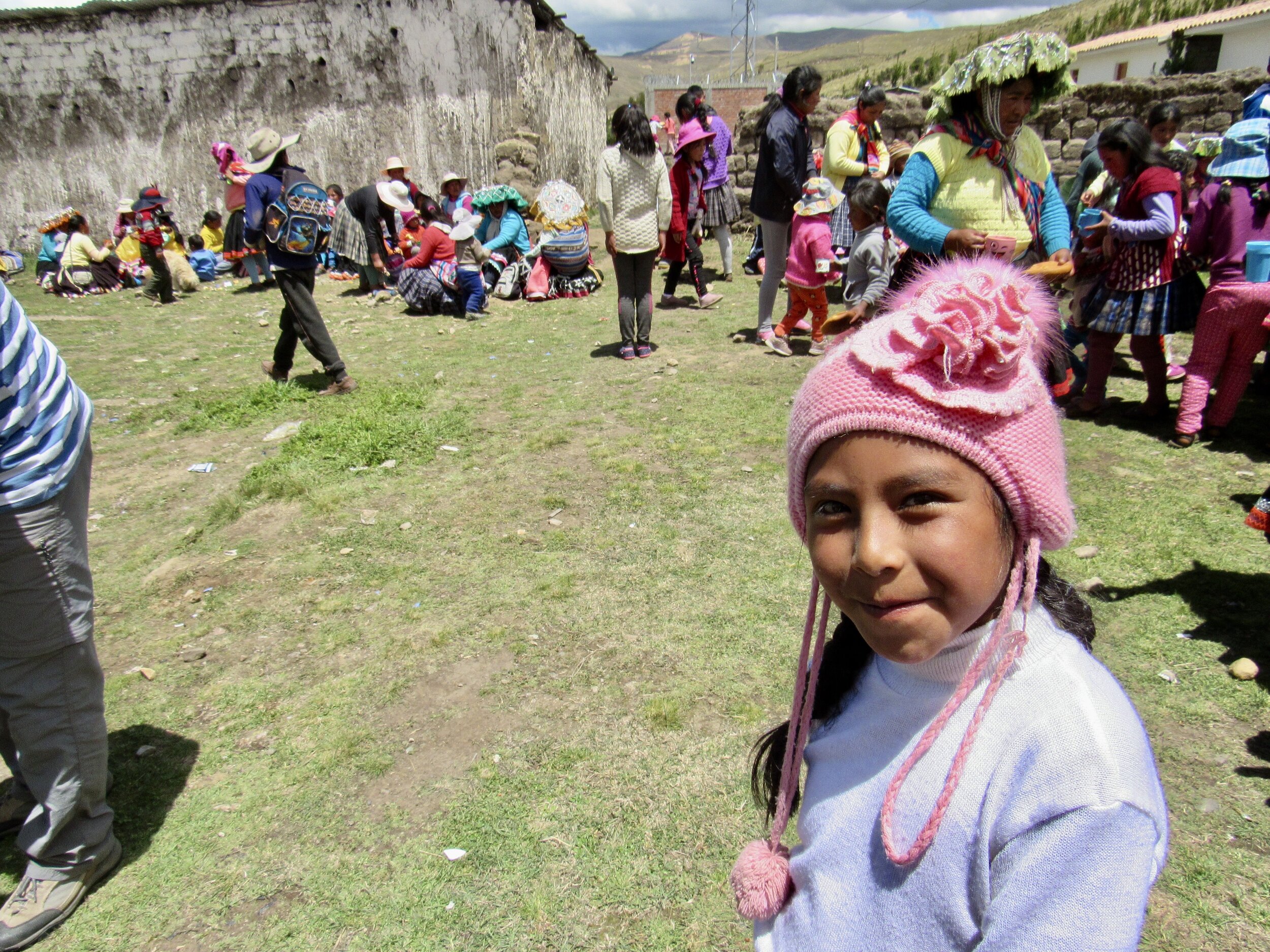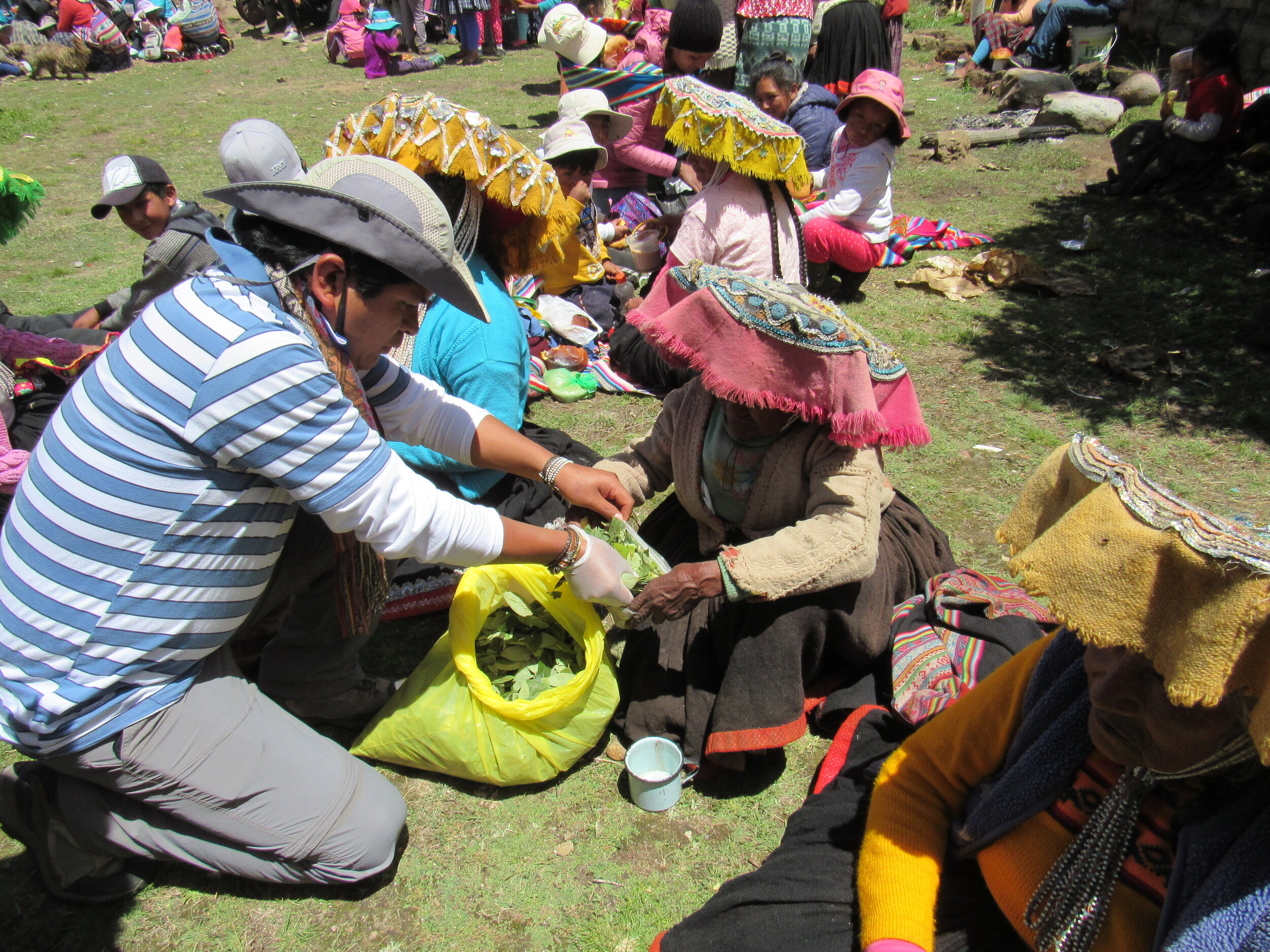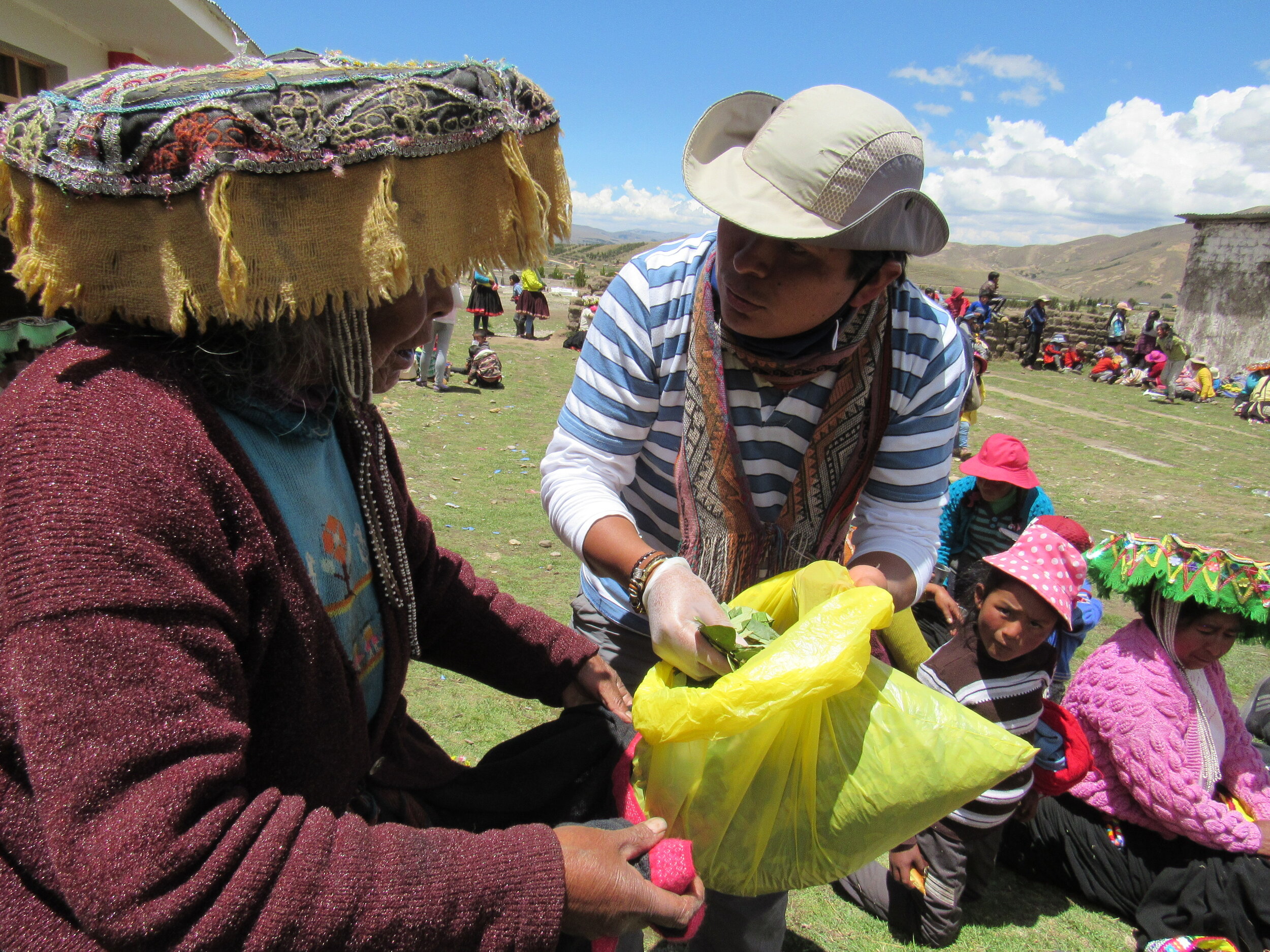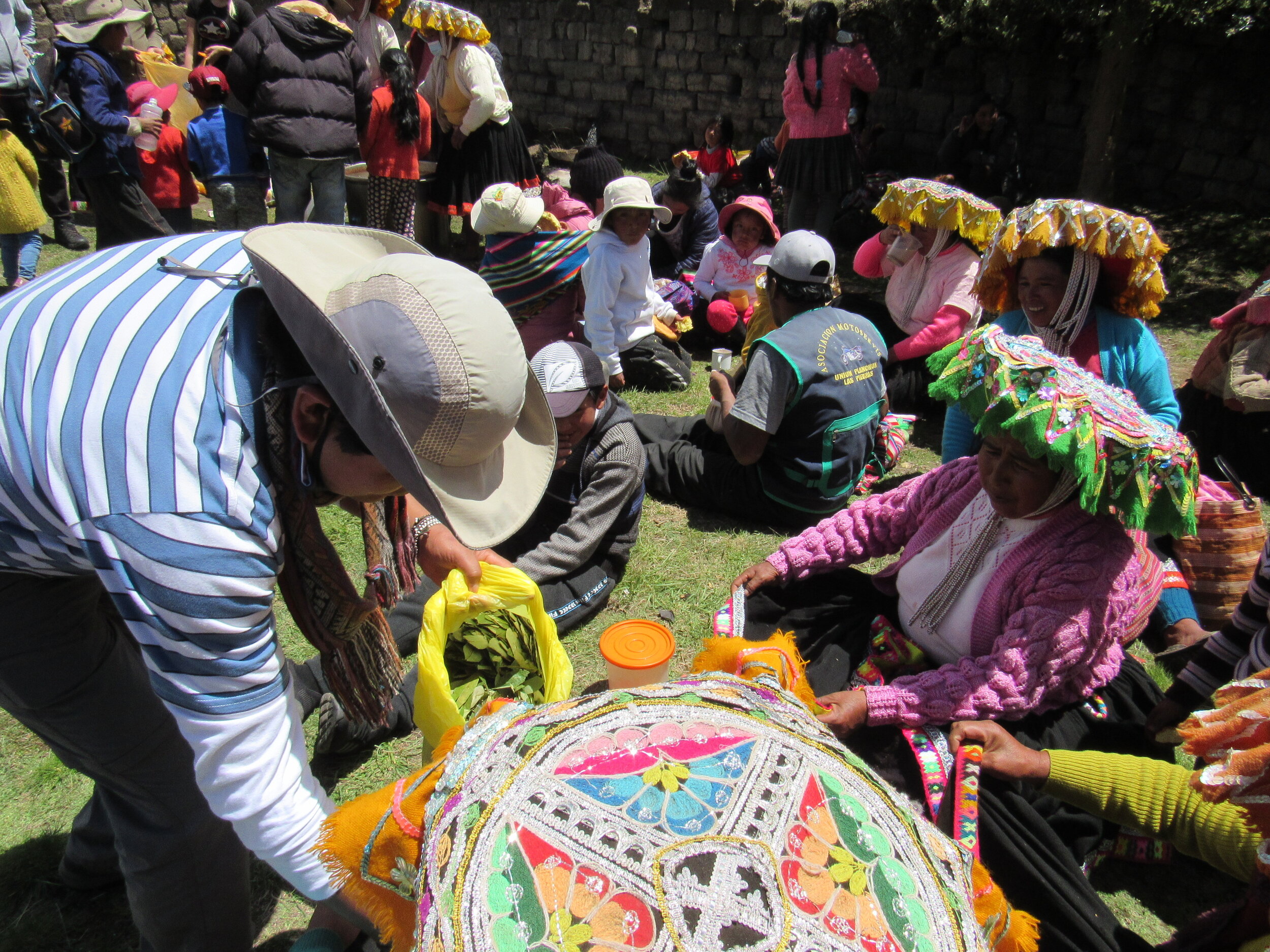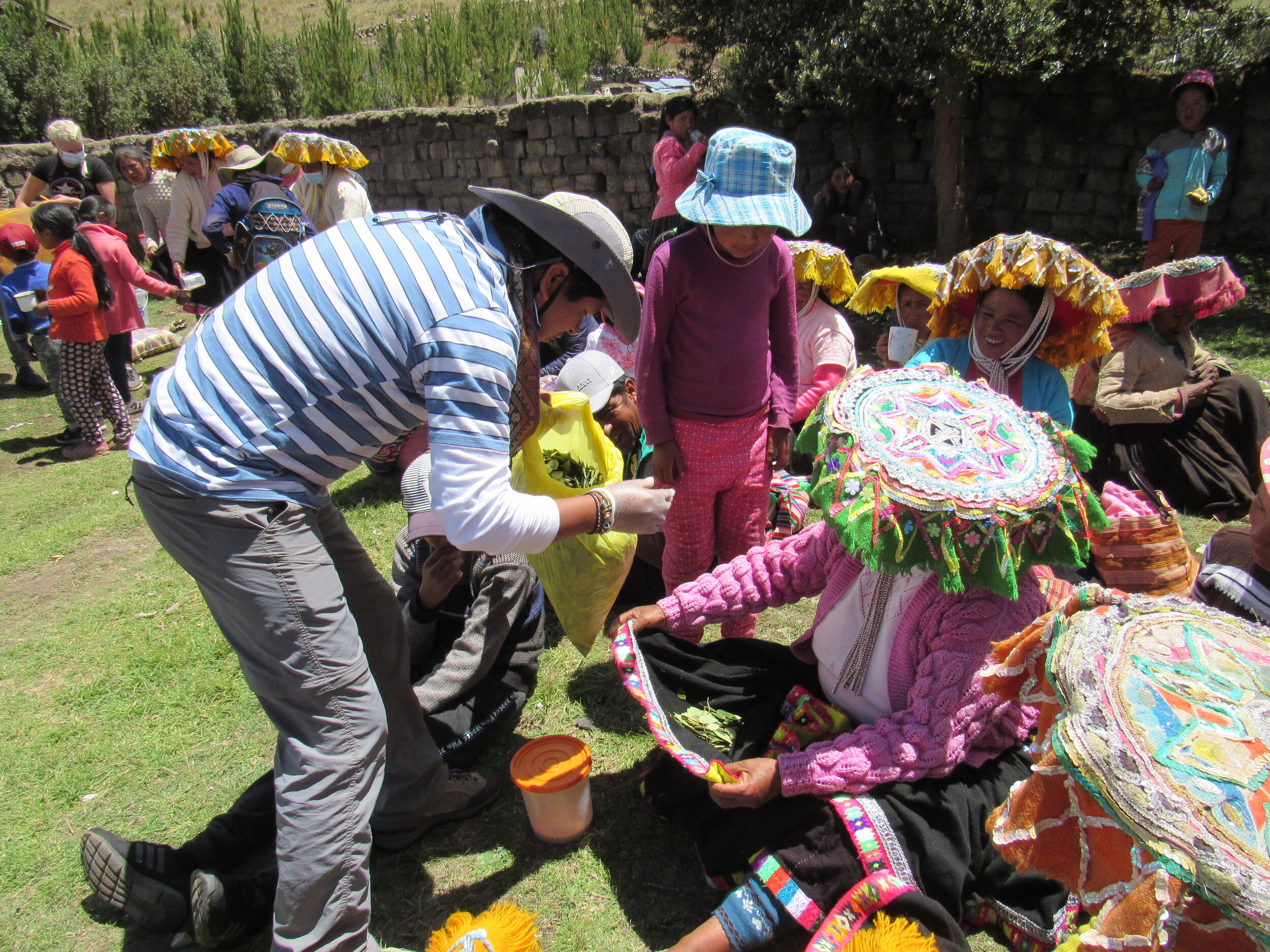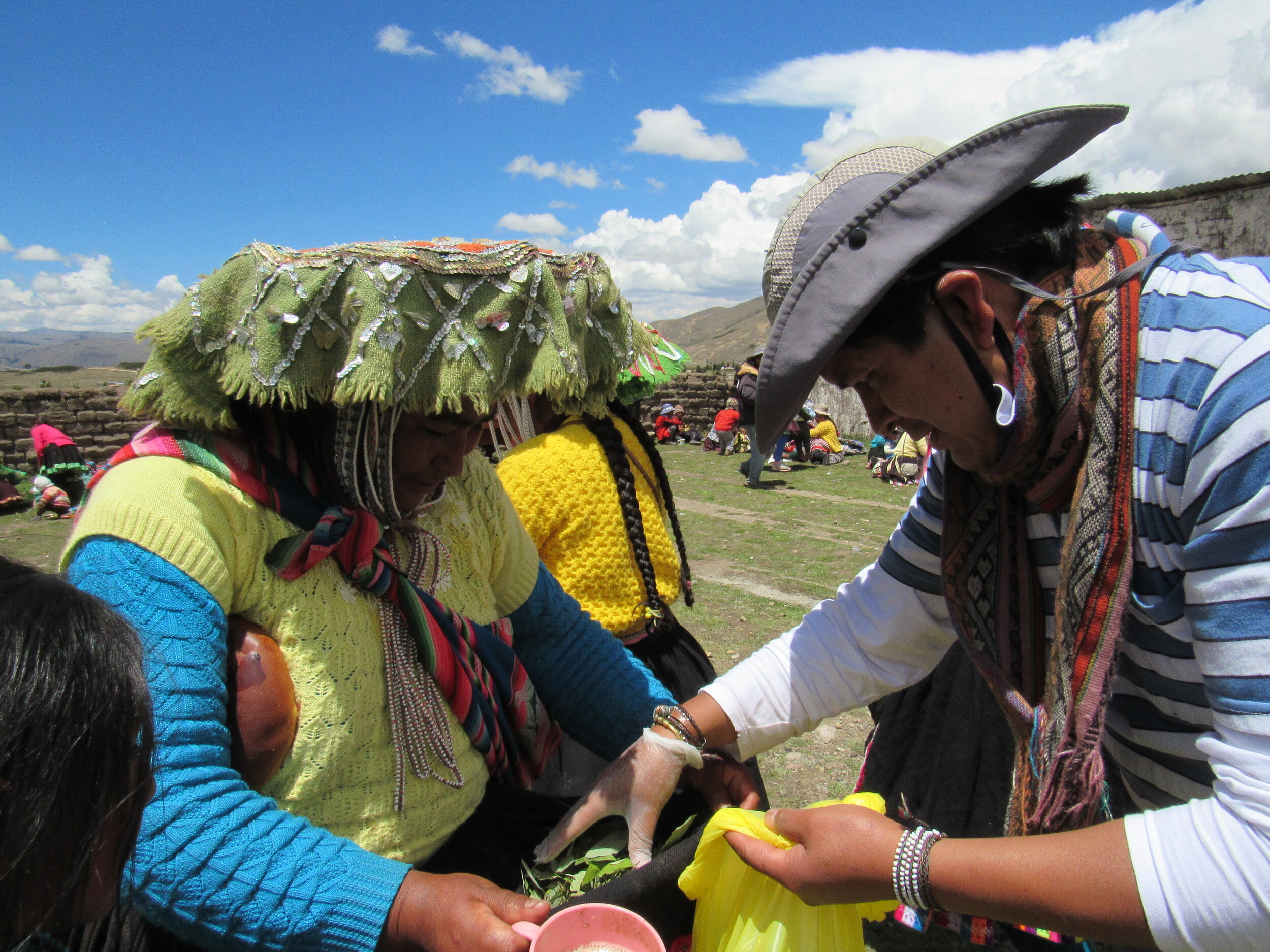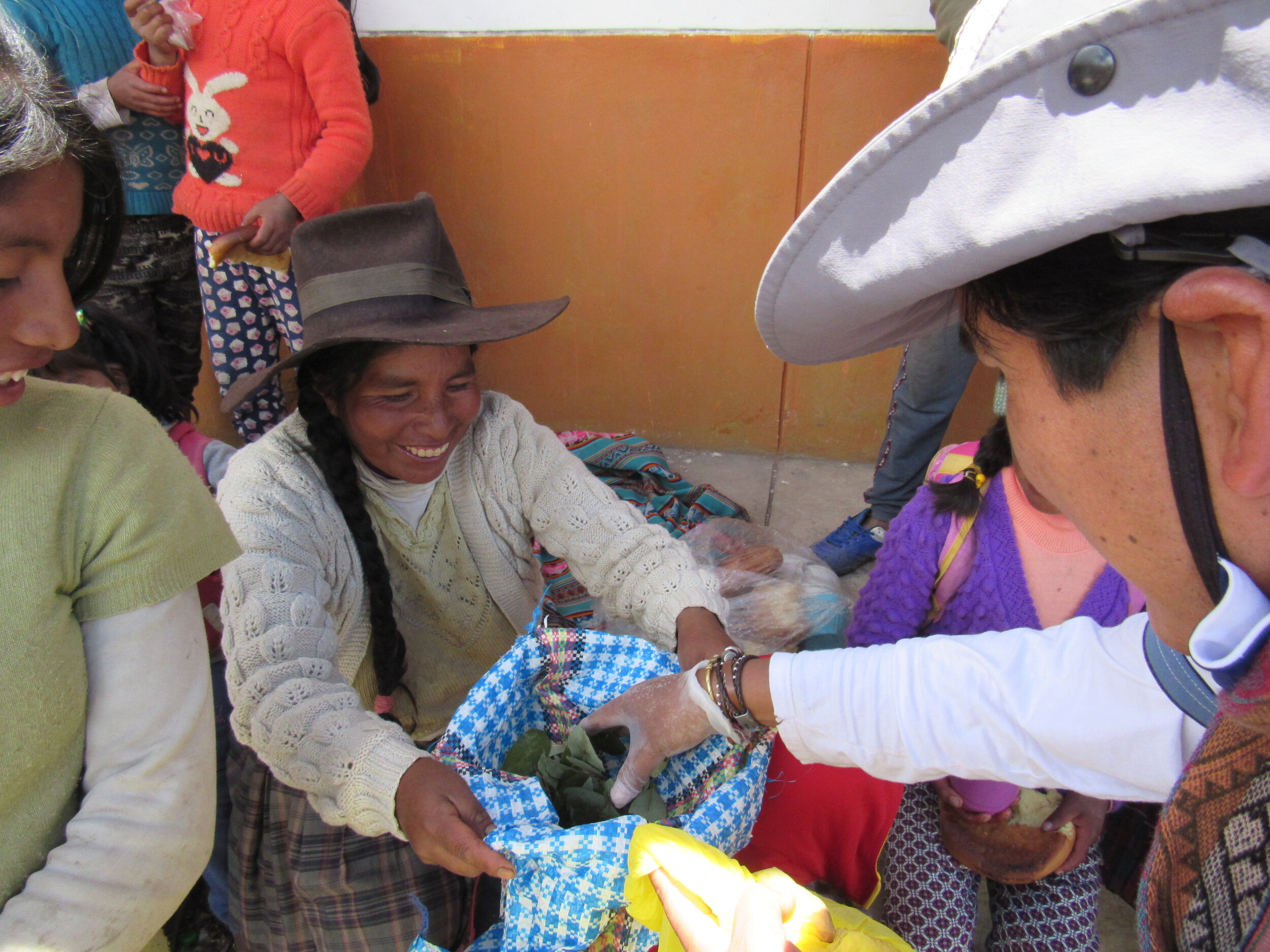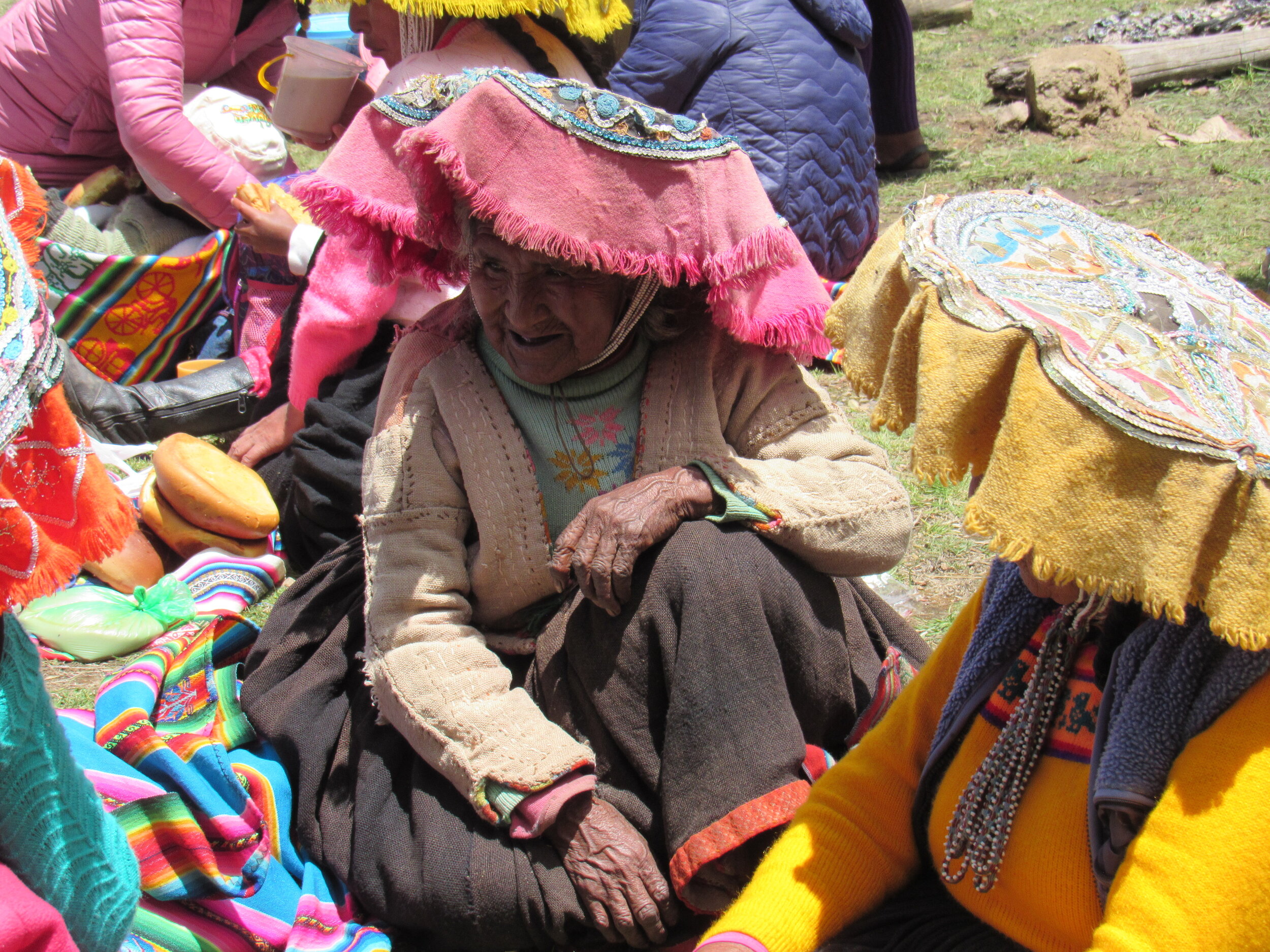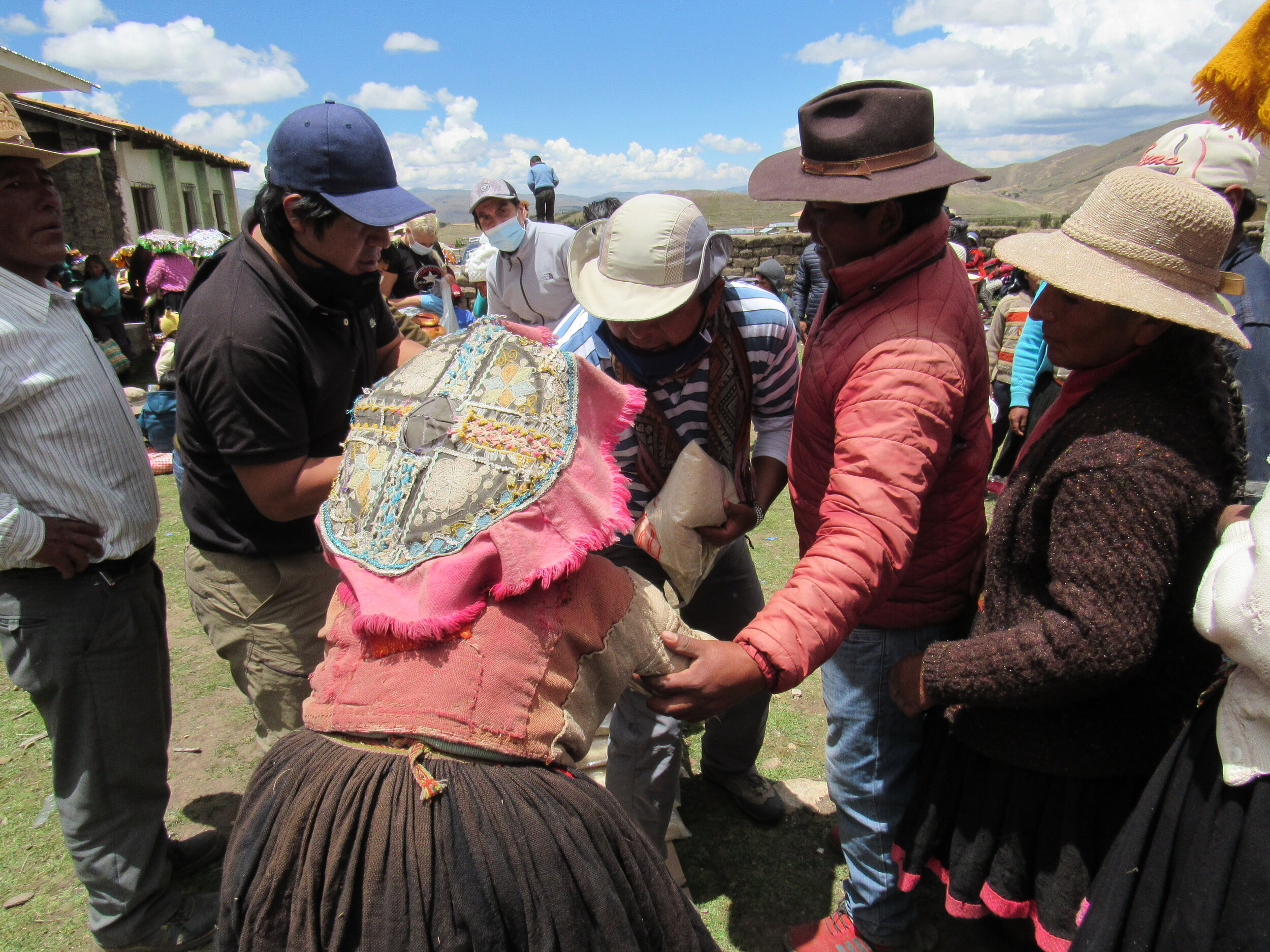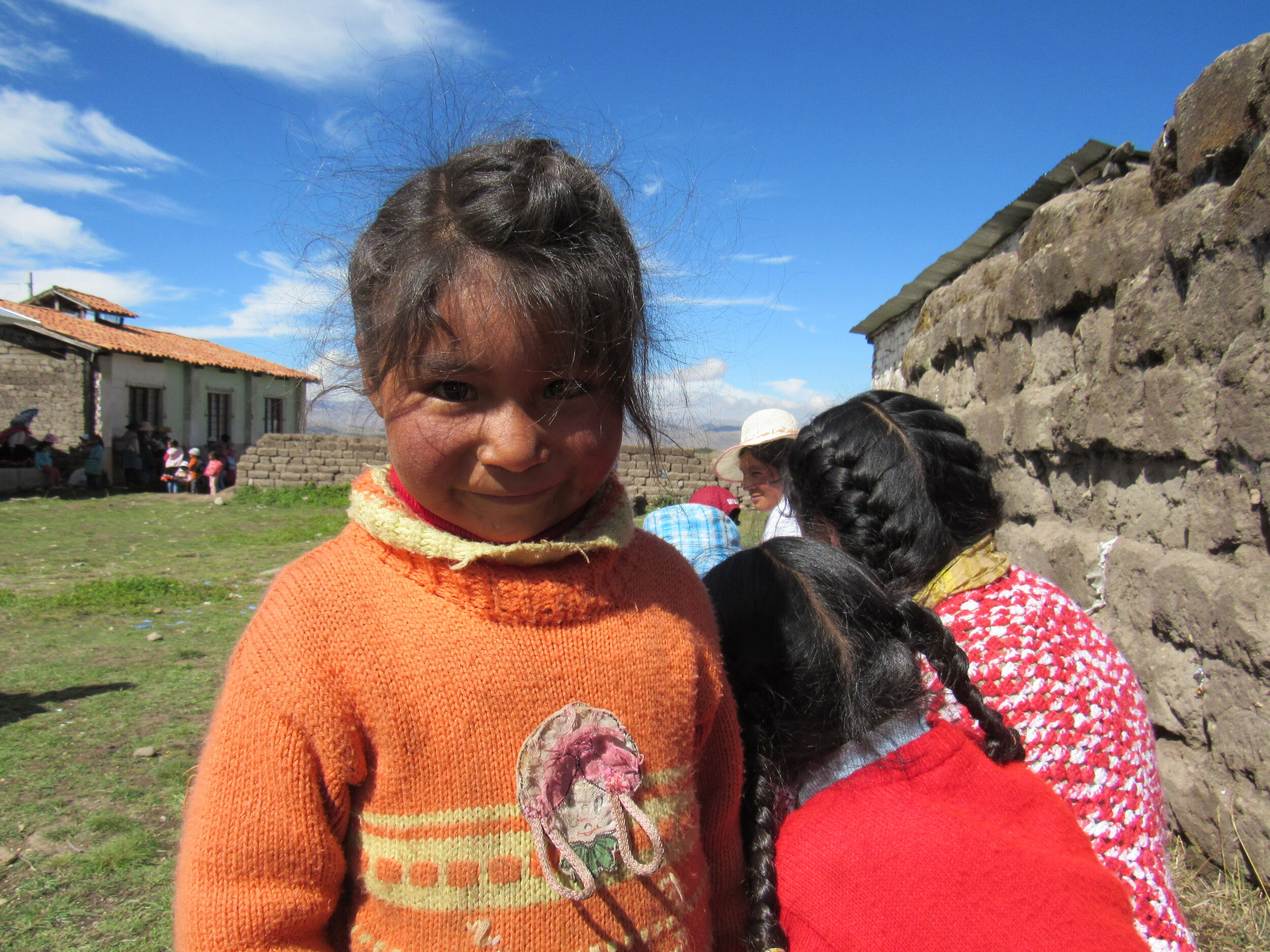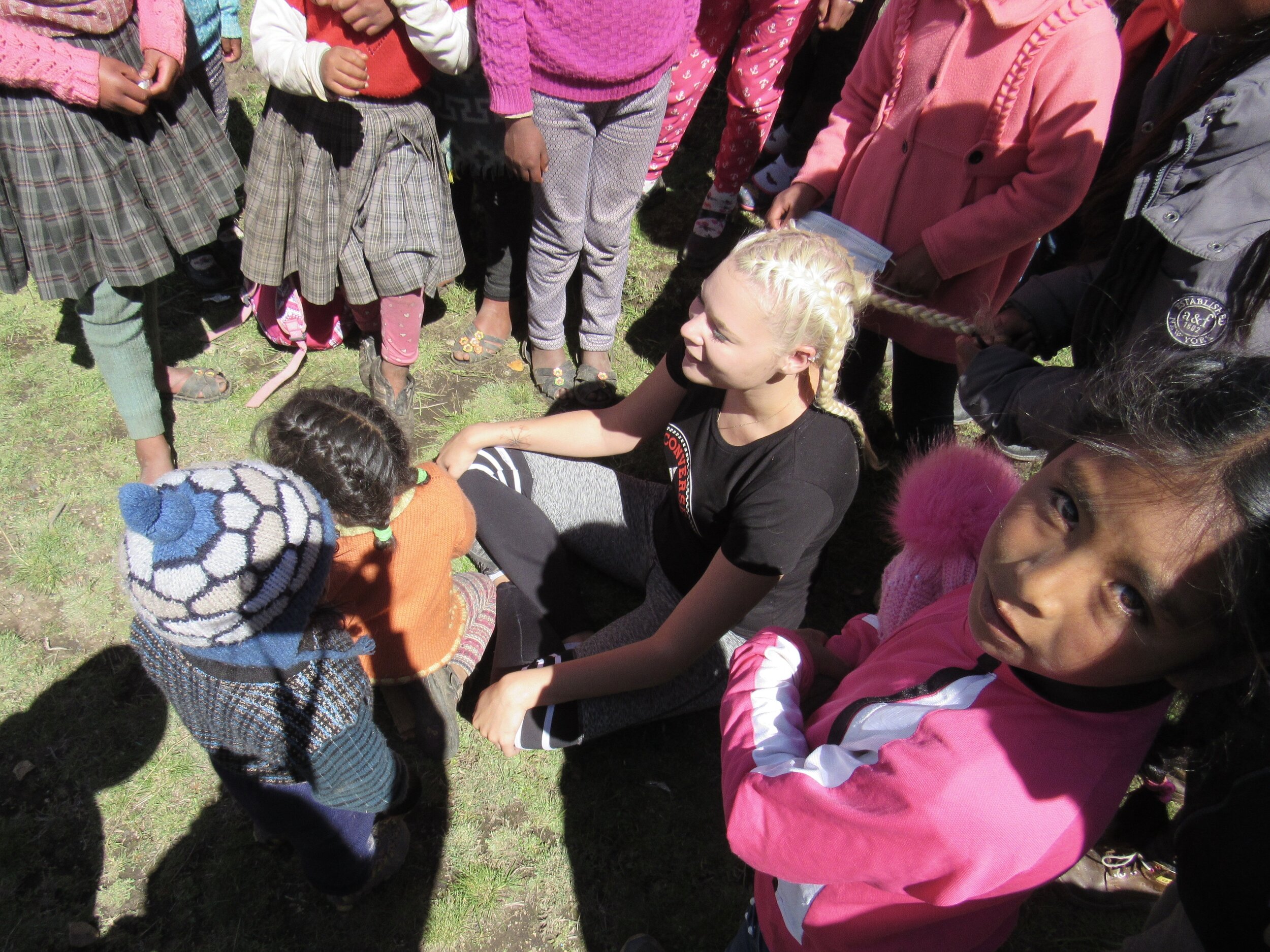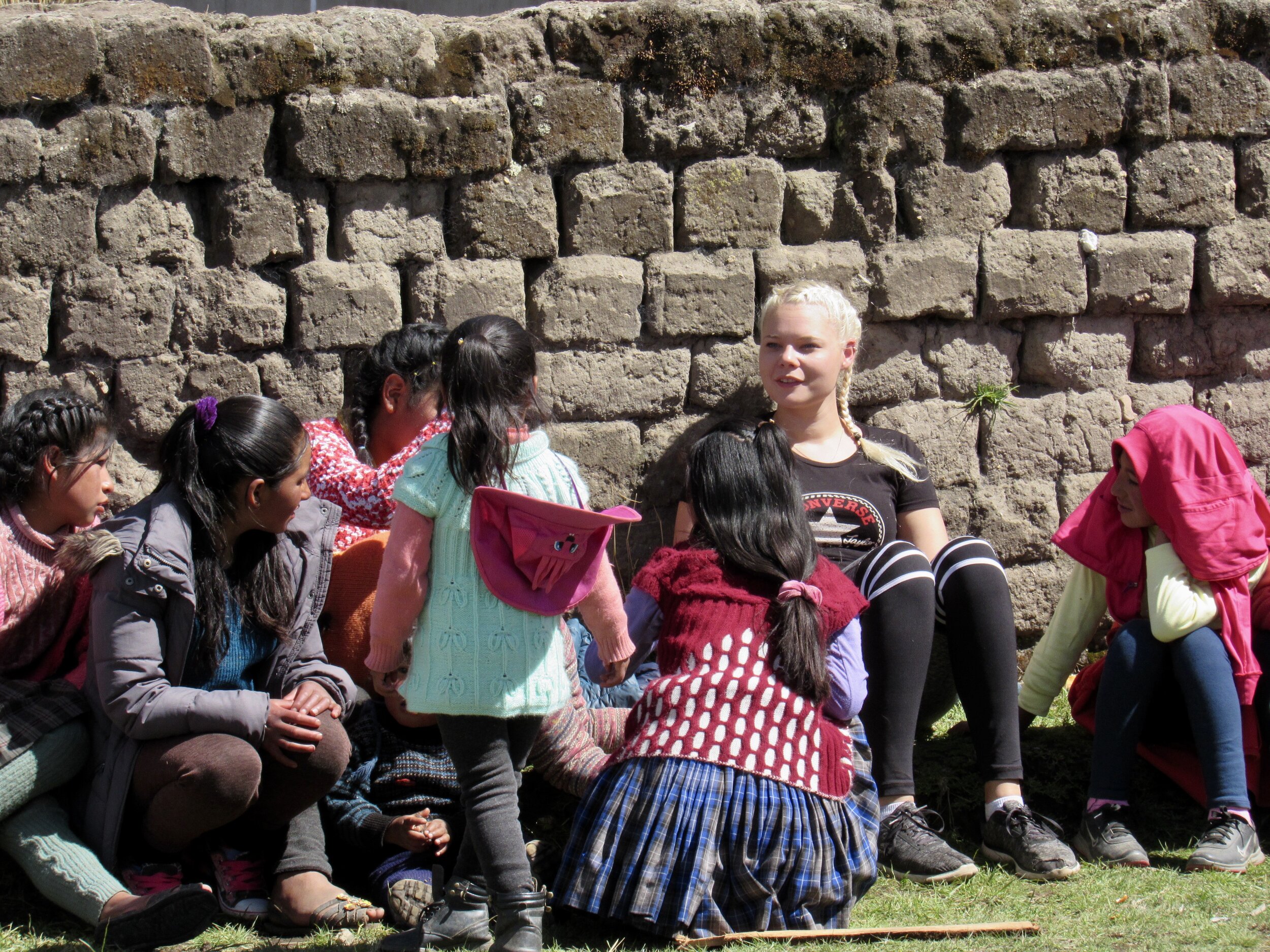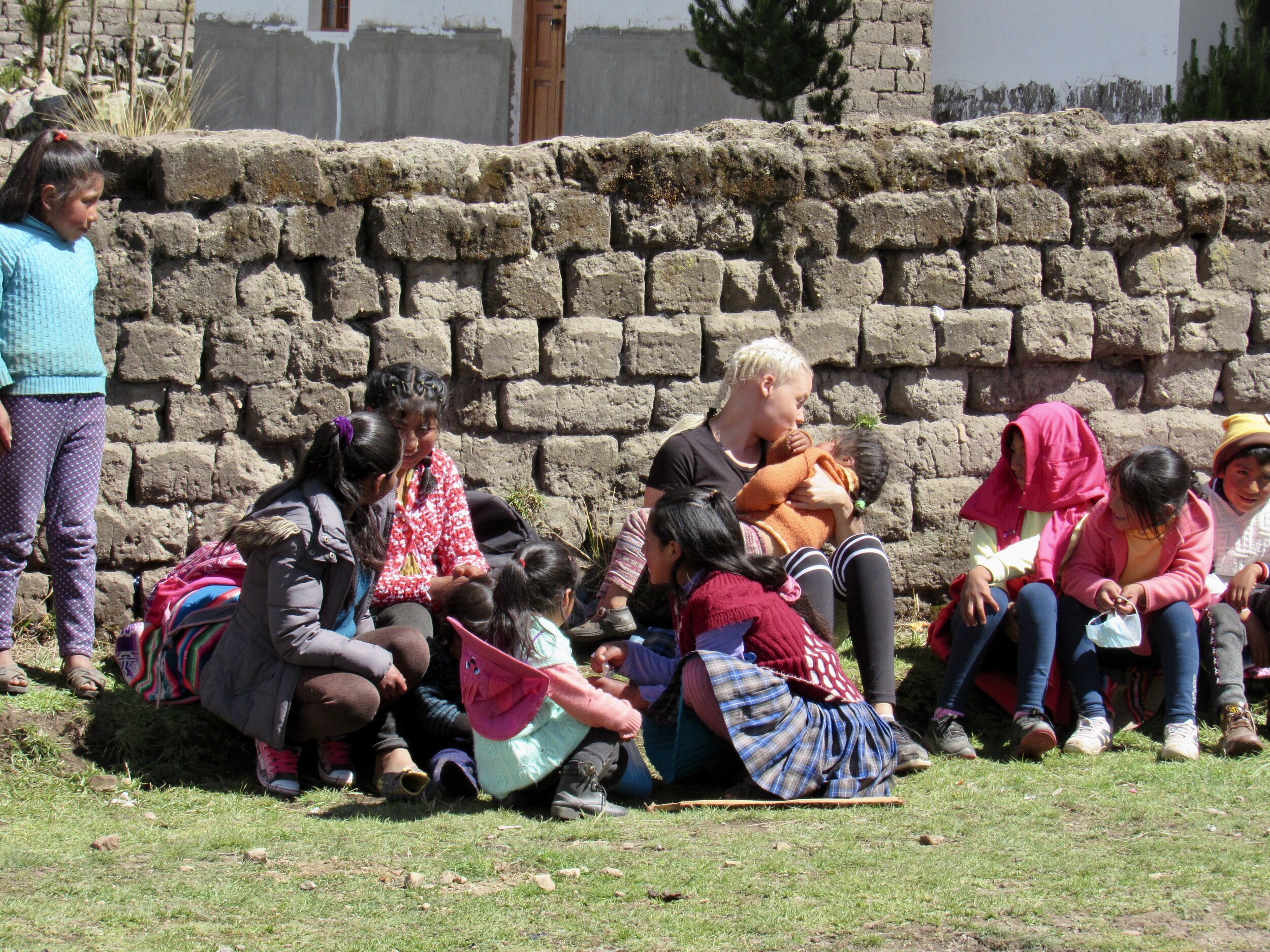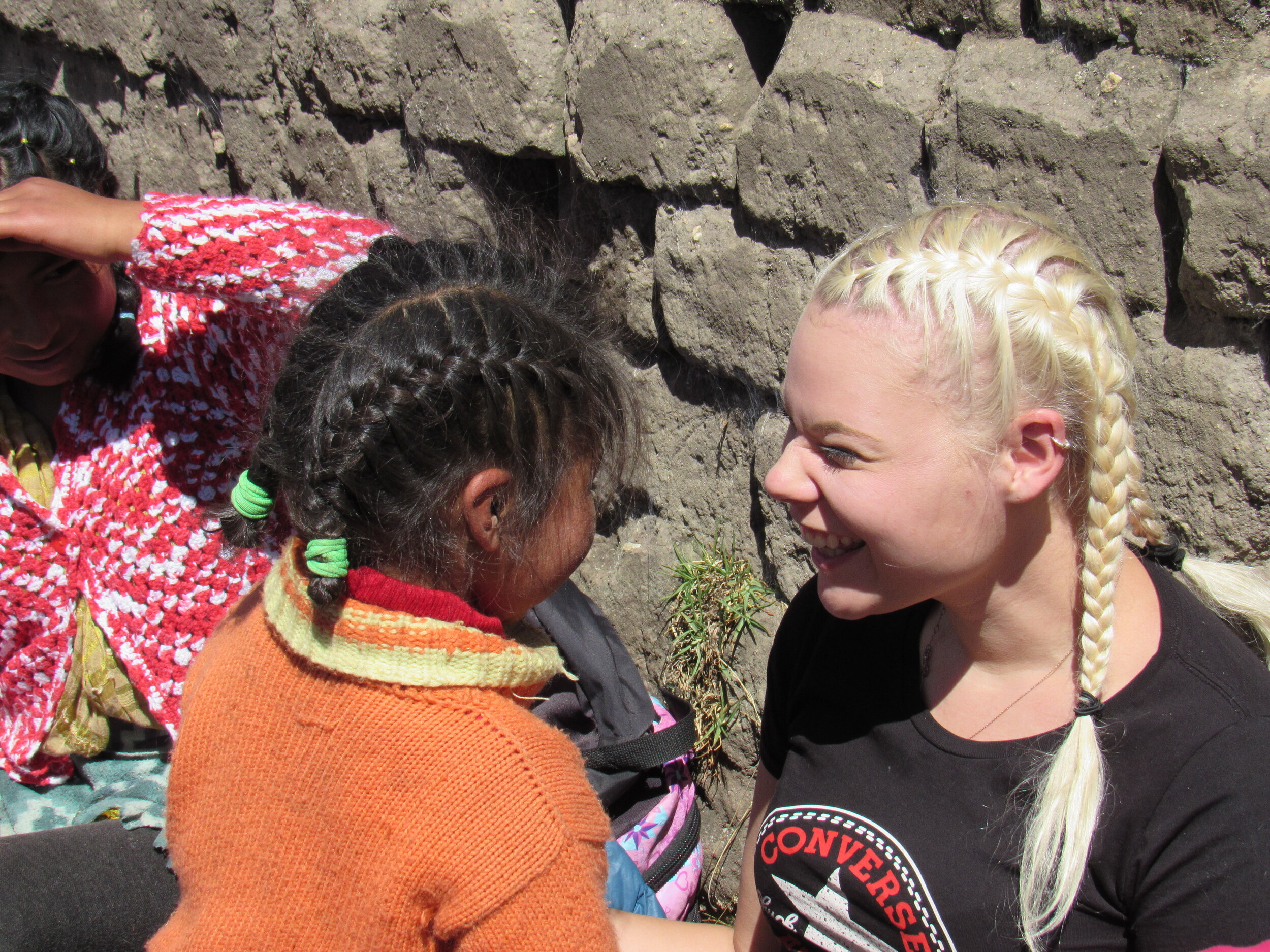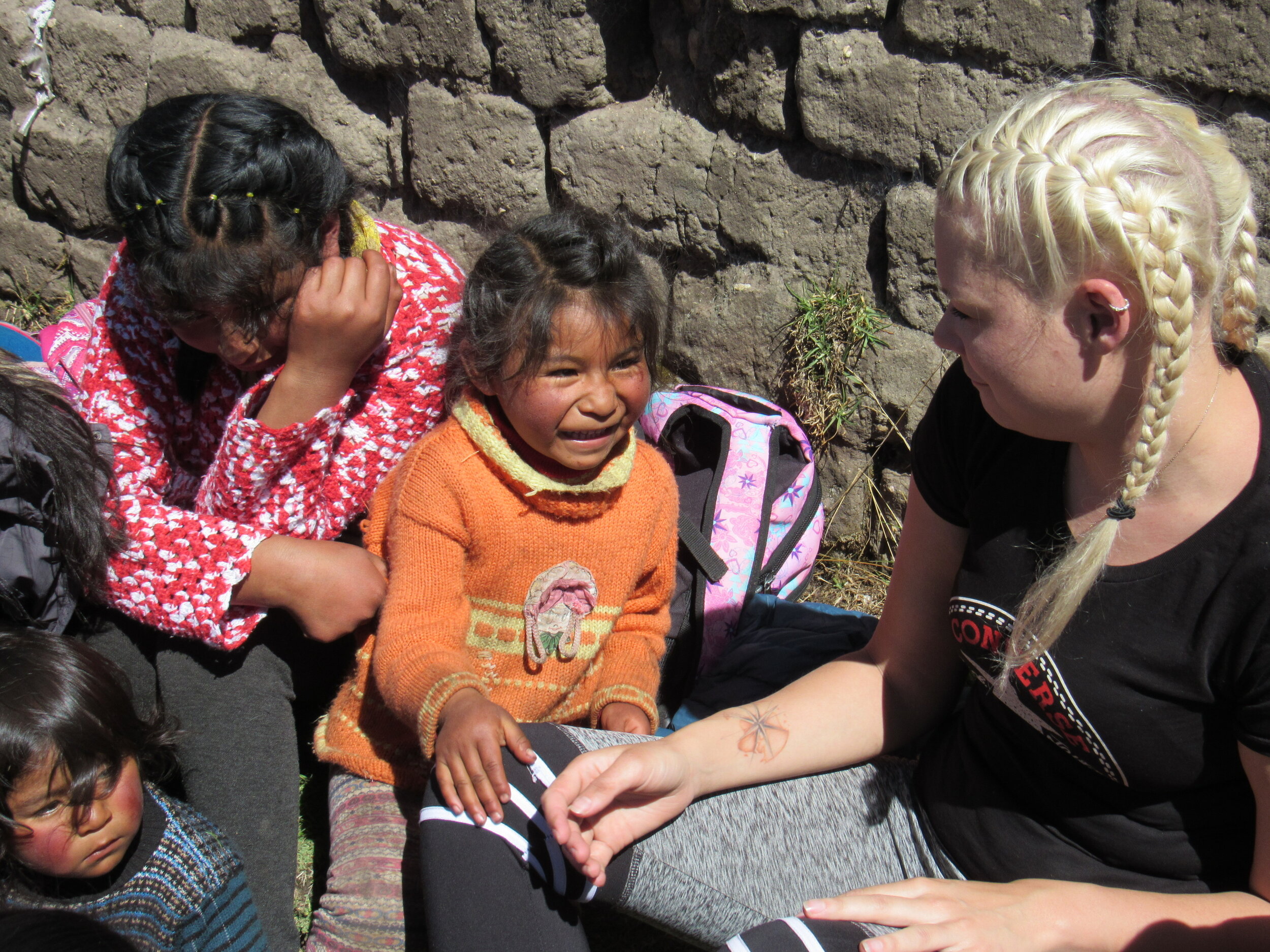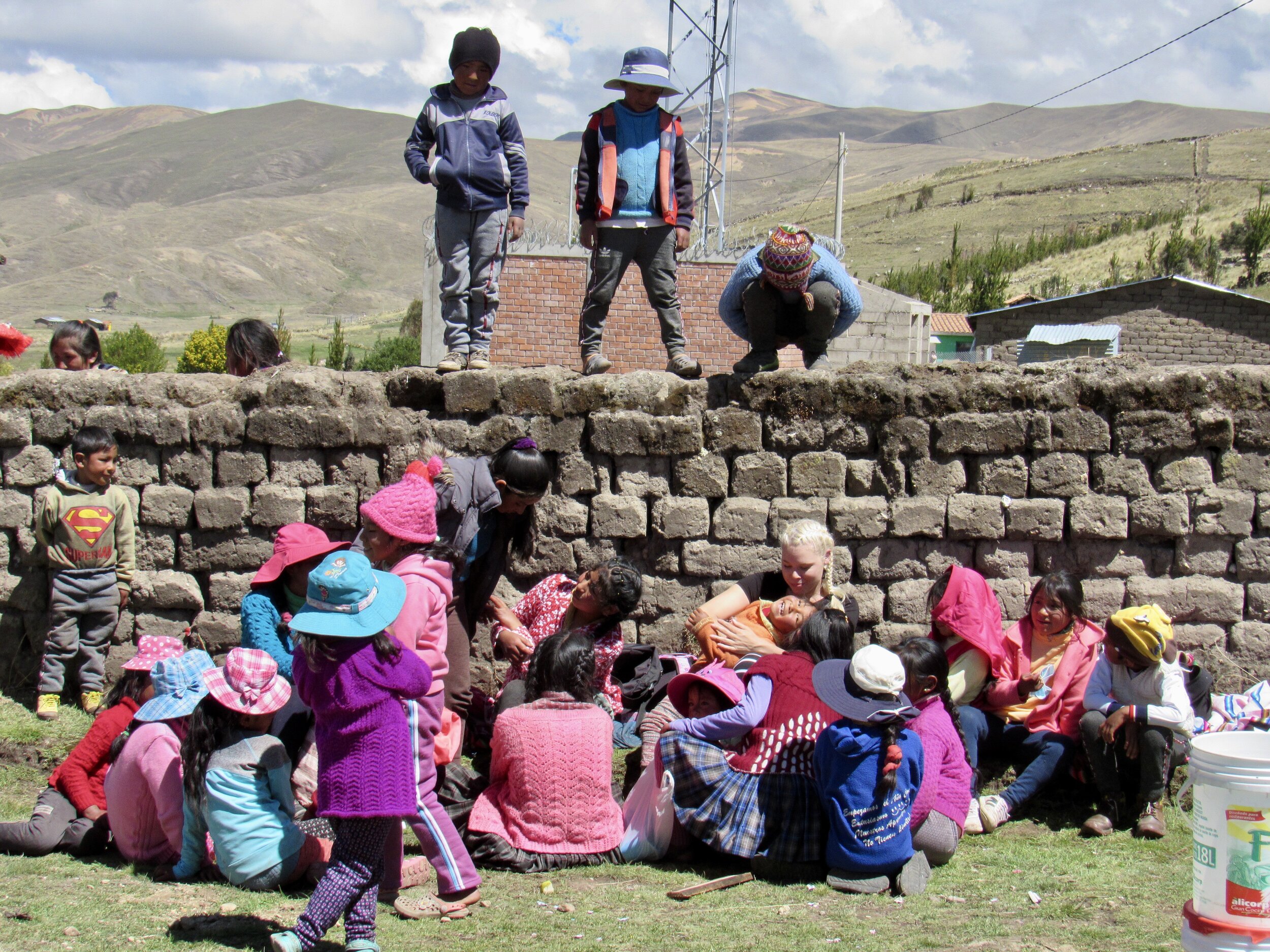Marampaqui, Ocongate
We had the most beautiful day for the chocolatada at Marampaqui! Today went pretty similarly to the previous three chocolatadas. The first task is to make sure that the women making the hot chocolate got the chocolate, milk, sugar, cloves & cinnamon. They already had a giant pot of water boiling on a fire, in a grassy area next to the one room school house. They added the cloves, cinnamon sticks and chocolate to the water, to be sure that the cacao was completely melted. After it was boiling they added the 30 liters of milk and brought it to a boil again, since fresh milk must be boiled. When it started to boil over, four people lifted it off the fire and set it on the grass. The last step was to add the sugar before we could serve the hot chocolate.
While we were waiting for the hot chocolate to be ready, we handed out clothes to the kids. Grimaldo Quispe, the mayor of Ocongate, helped hand out the clothes, along with the other volunteers who came with us today. Auqui and Henry were there, as always. We also had Henry’s niece and nephew, Lucero and Max. Two friends, Kerry and Sair, who backpacked around Ausangate with me, also joined us. They had gone through Ocongate at the beginning and end of the backpack trip and were eager to see the area again. We had a beautiful view of Mt. Ausangate from Marampaqui, although clouds gathered over the mountain by mid-morning, so we only had a clear view early in the morning.

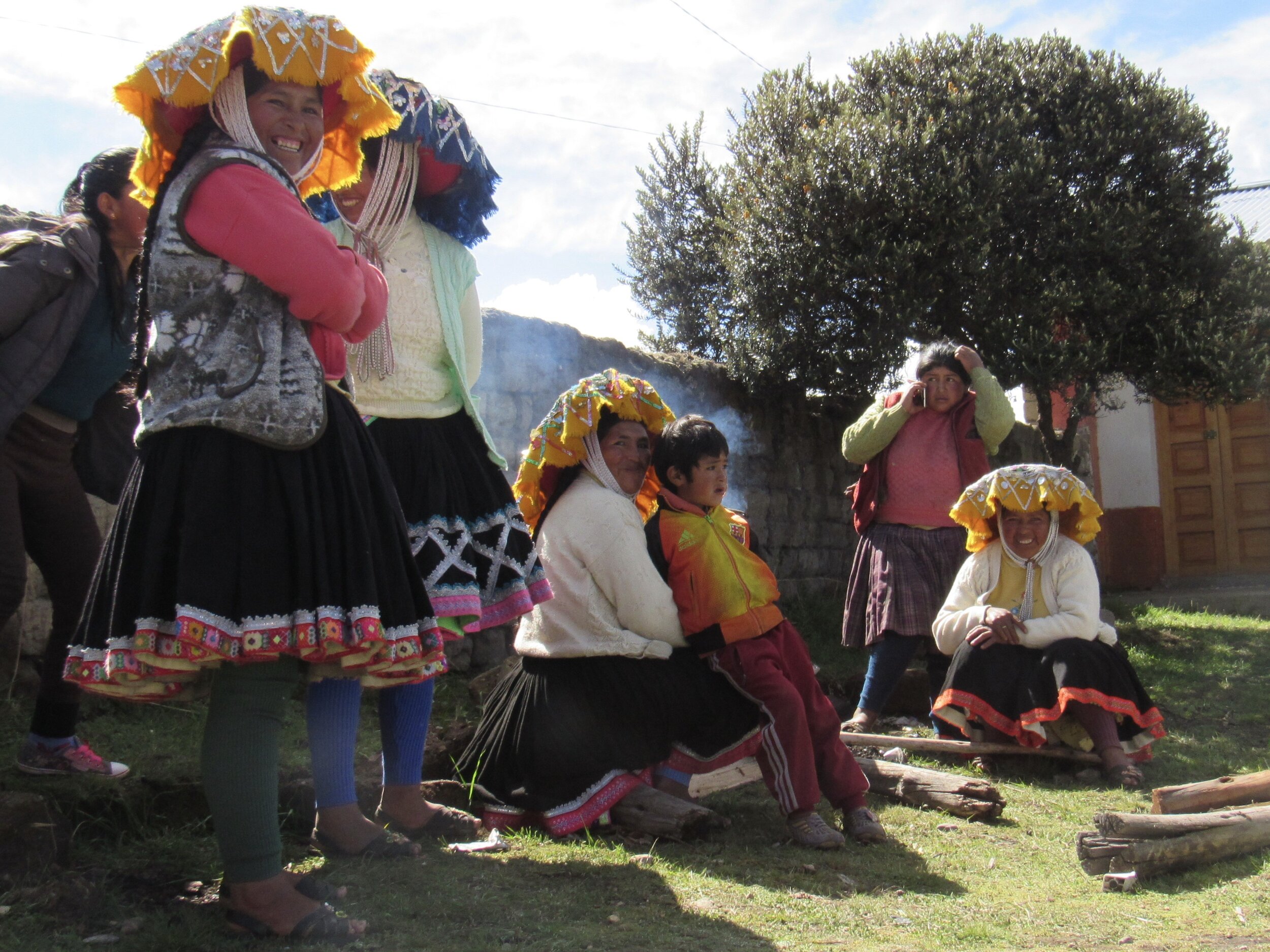
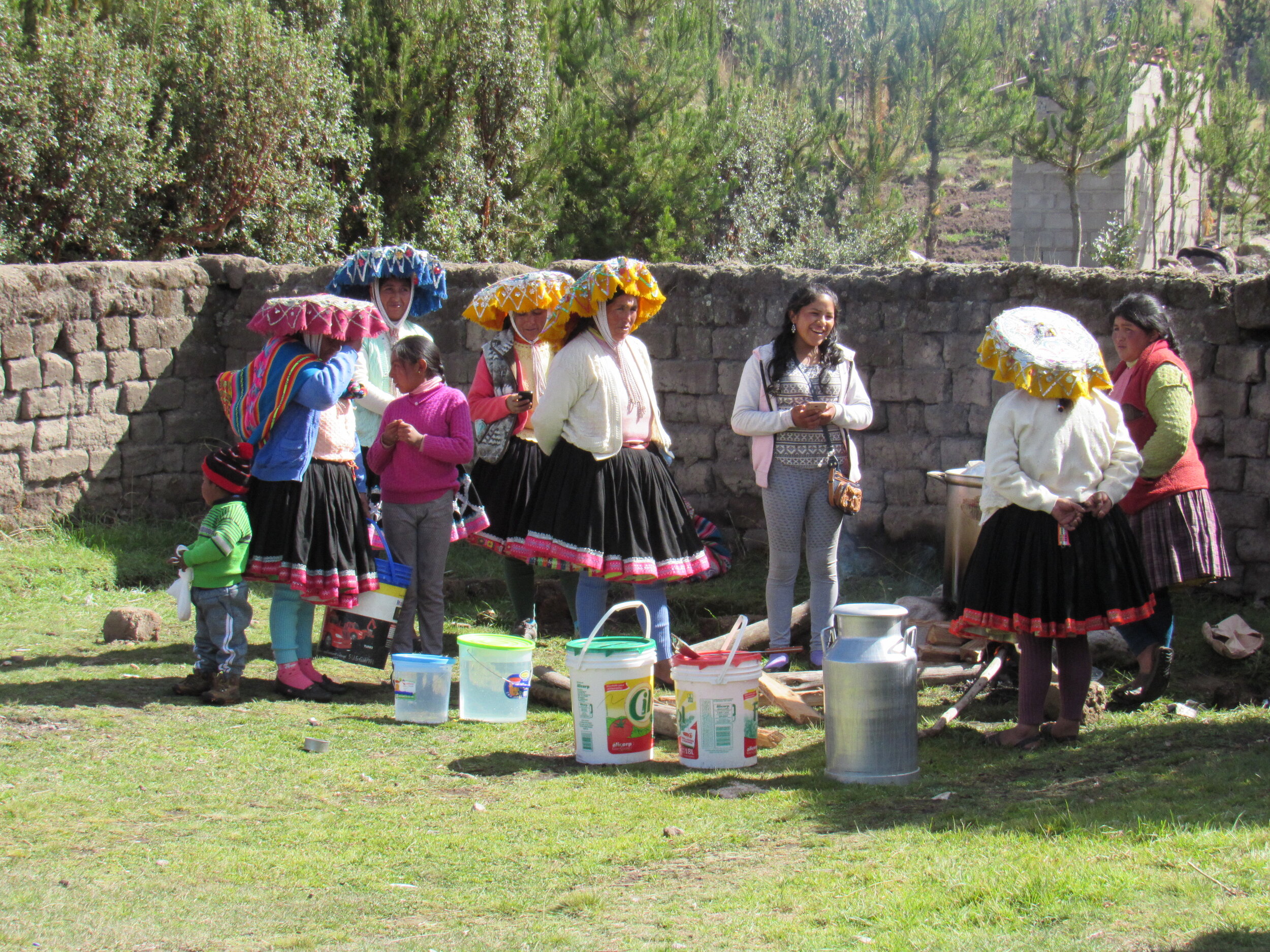
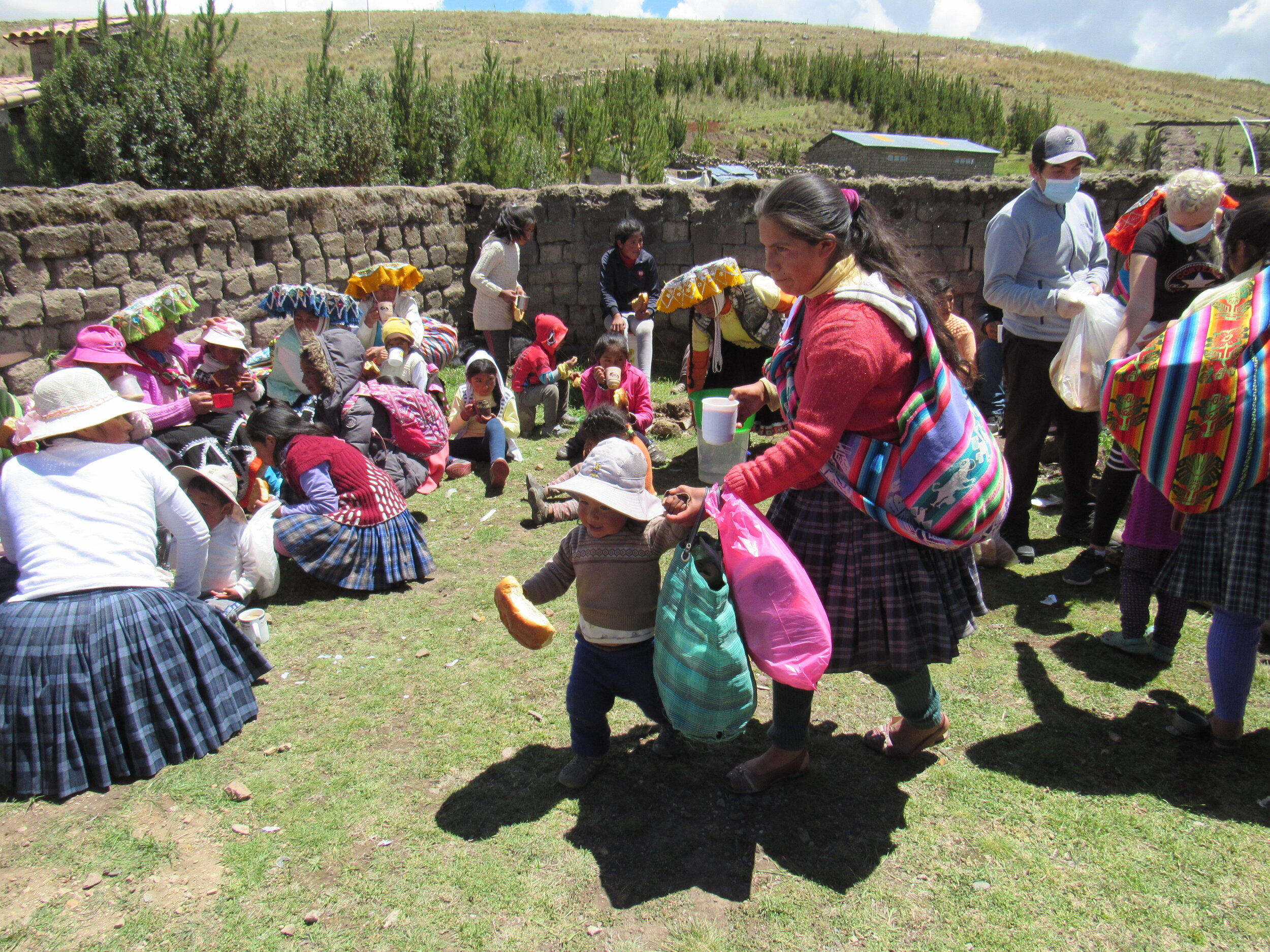
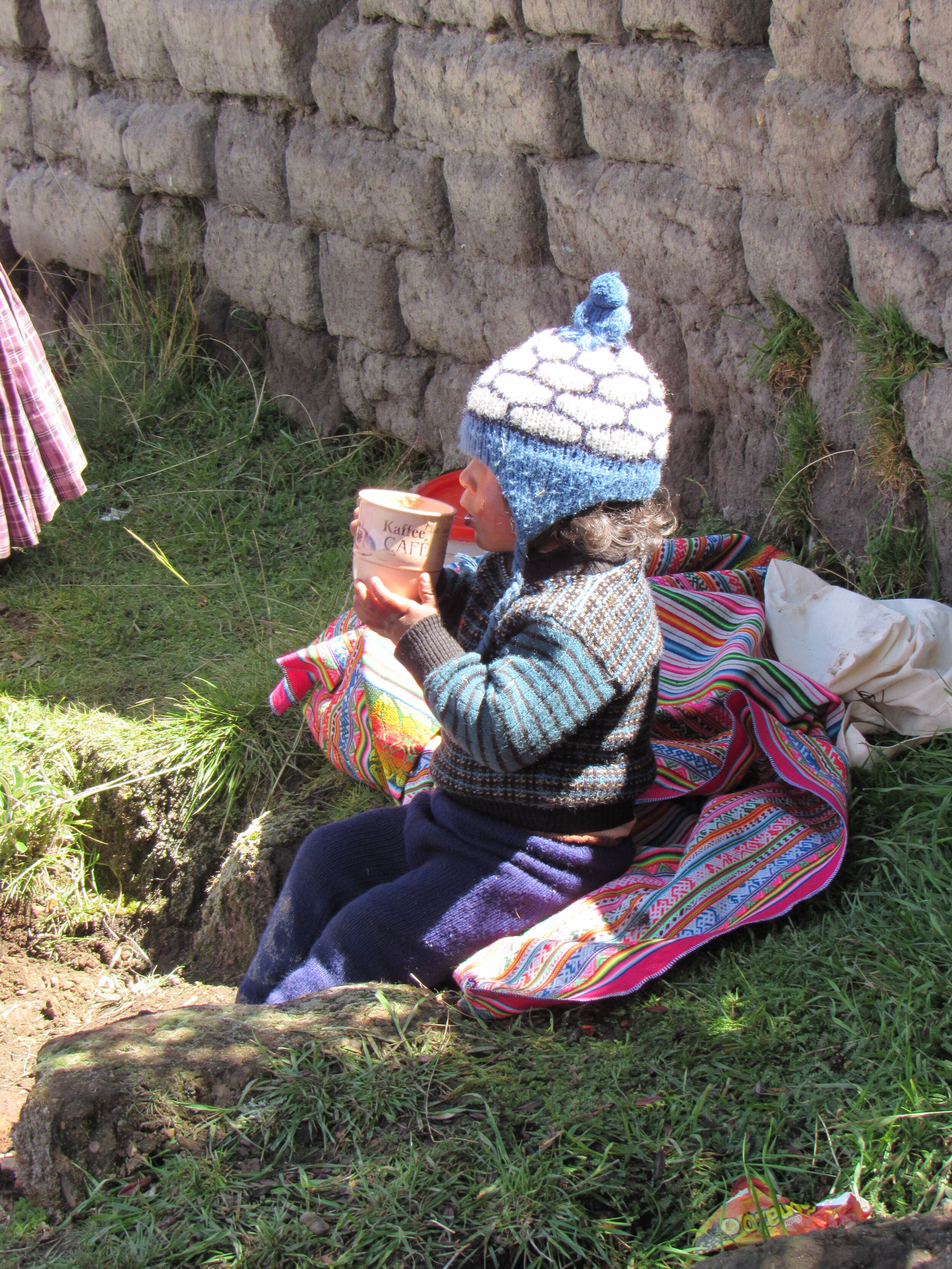
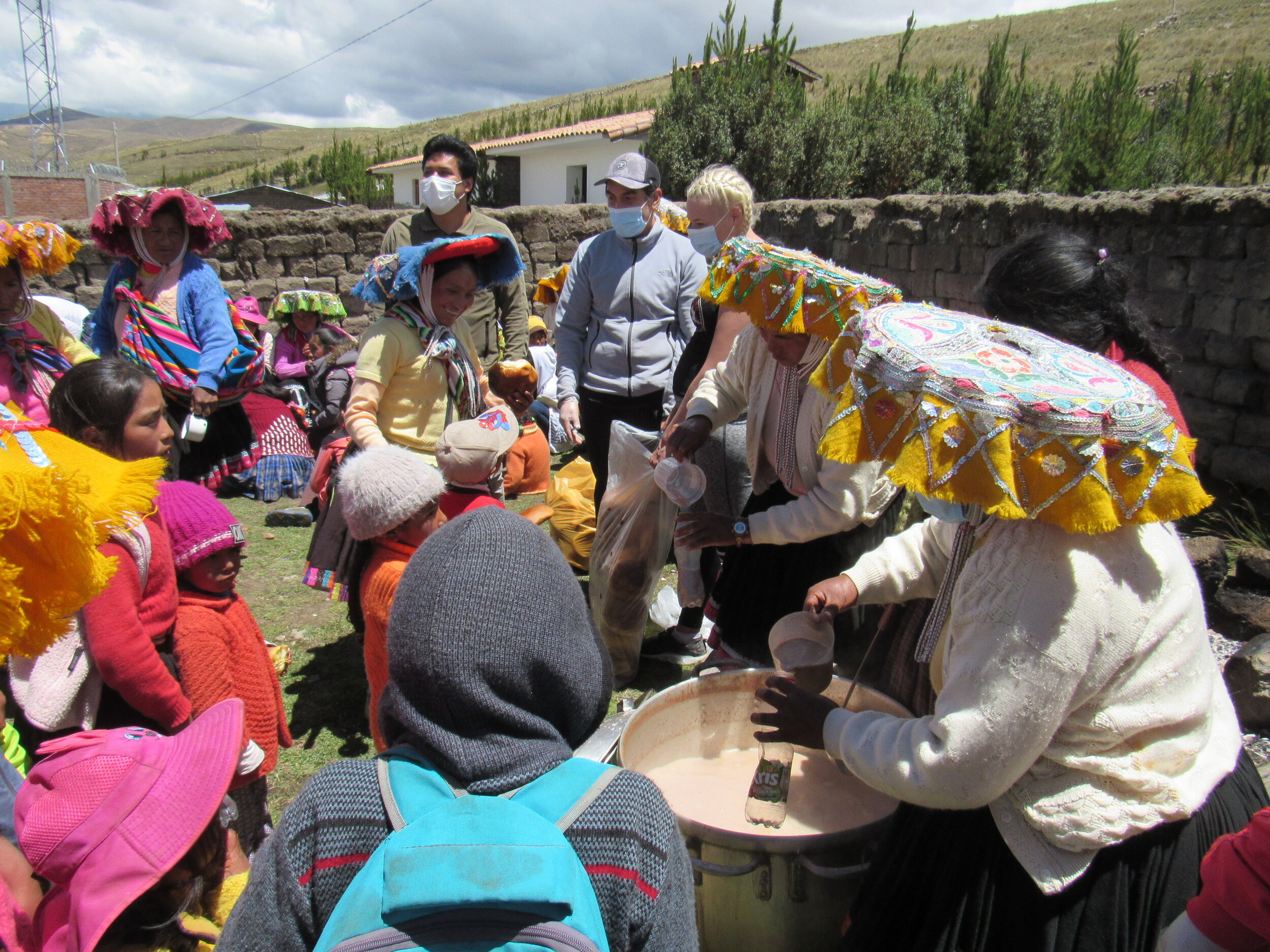

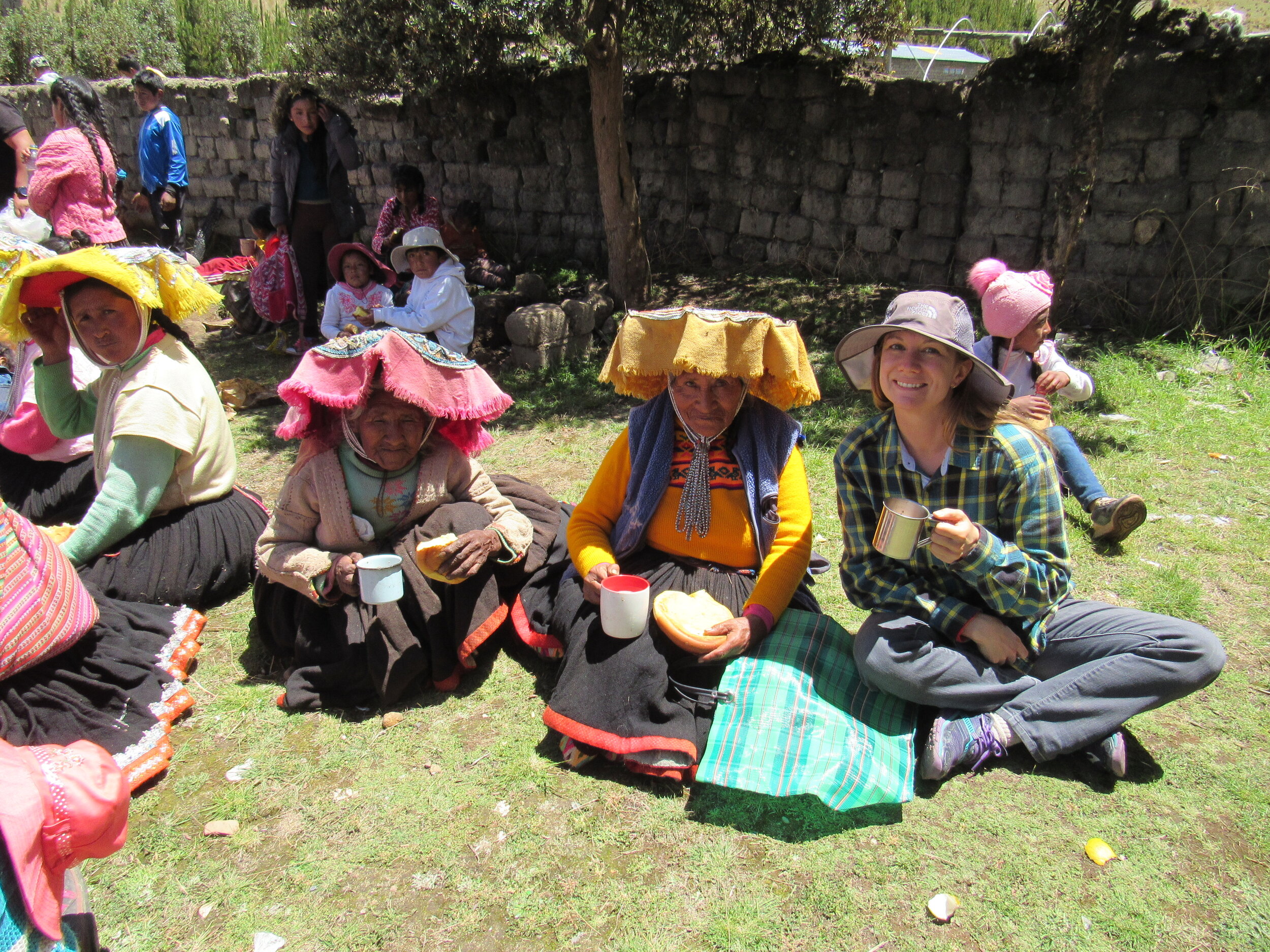
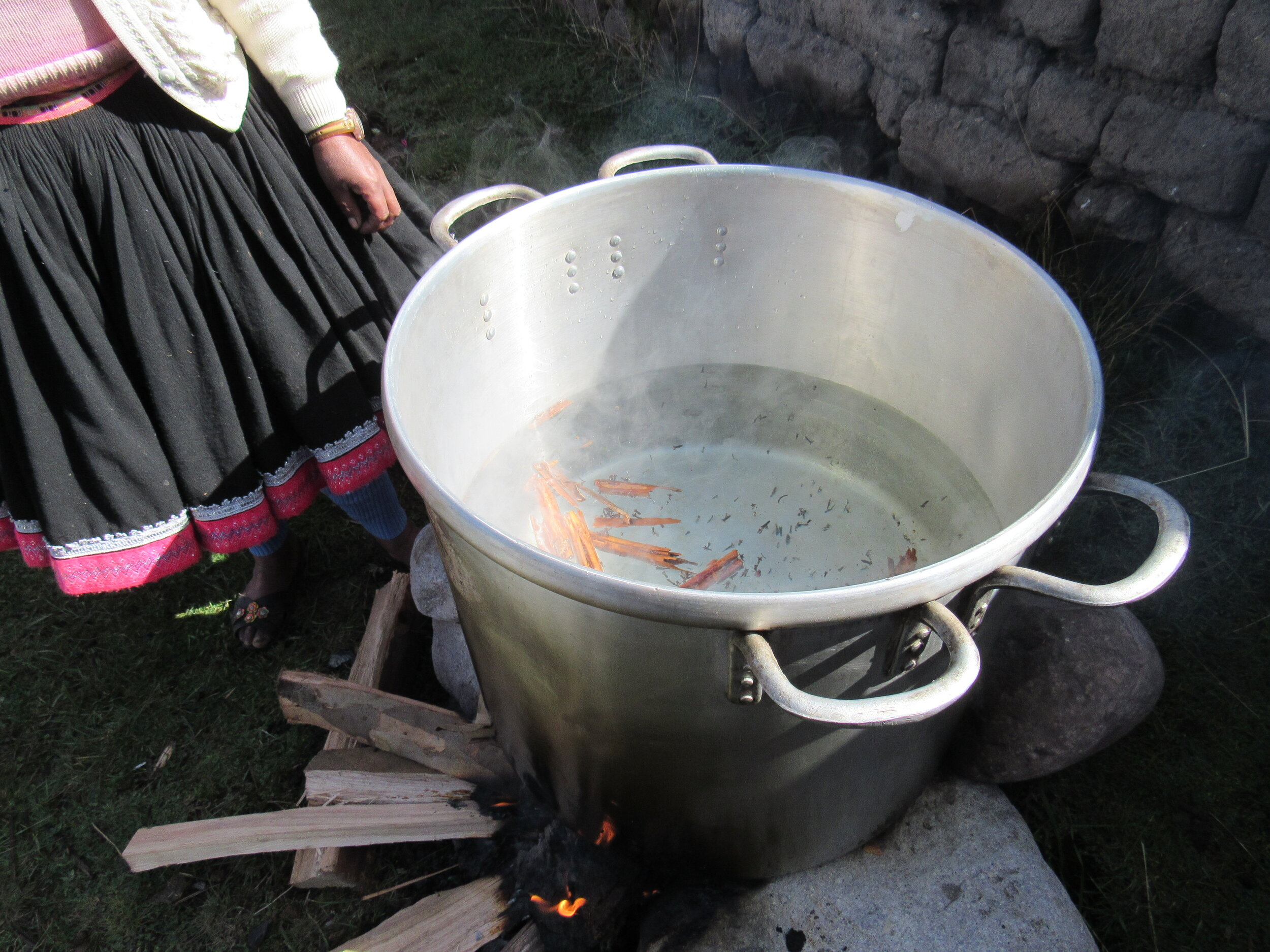

Then we had the chocolatada, making sure that everybody got a panettone and at least one cup or bowl of hot chocolate. Lots of kids had forgotten to bring a cup and lived too far away to go home. They either borrowed somebody else’s cup or found a water bottle or something that could hold liquid. We did our best to be sure that everybody got hot chocolate and I hope nobody got left out. I would estimate that at least four hundred people came to the chocolatada.
After the chocolatada, we gave out the oranges, rice and sugar, along with some leftover panettone. Unfortunately, Saturday is also market day in Ocongate, so there were quite a few adults missing from Marampaqui. The mayor of Ocongate was a huge help with calling out kids to represent their family and receive the donations. We really rely on local leaders to know who is in which family and keep track of who has already received their donations. By the end of it, there were still 16 families missing, so we entrusted their donations to the community president.
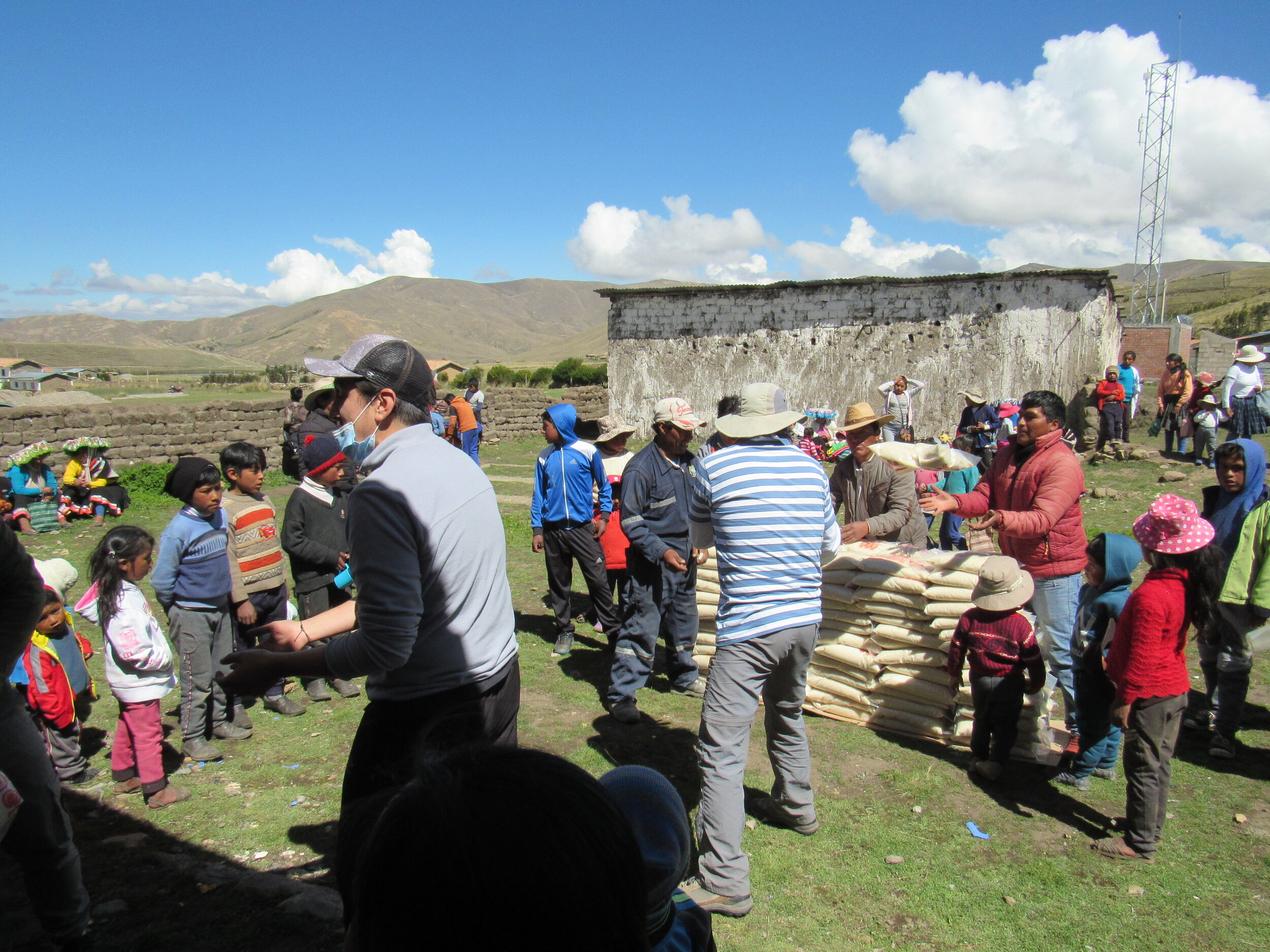
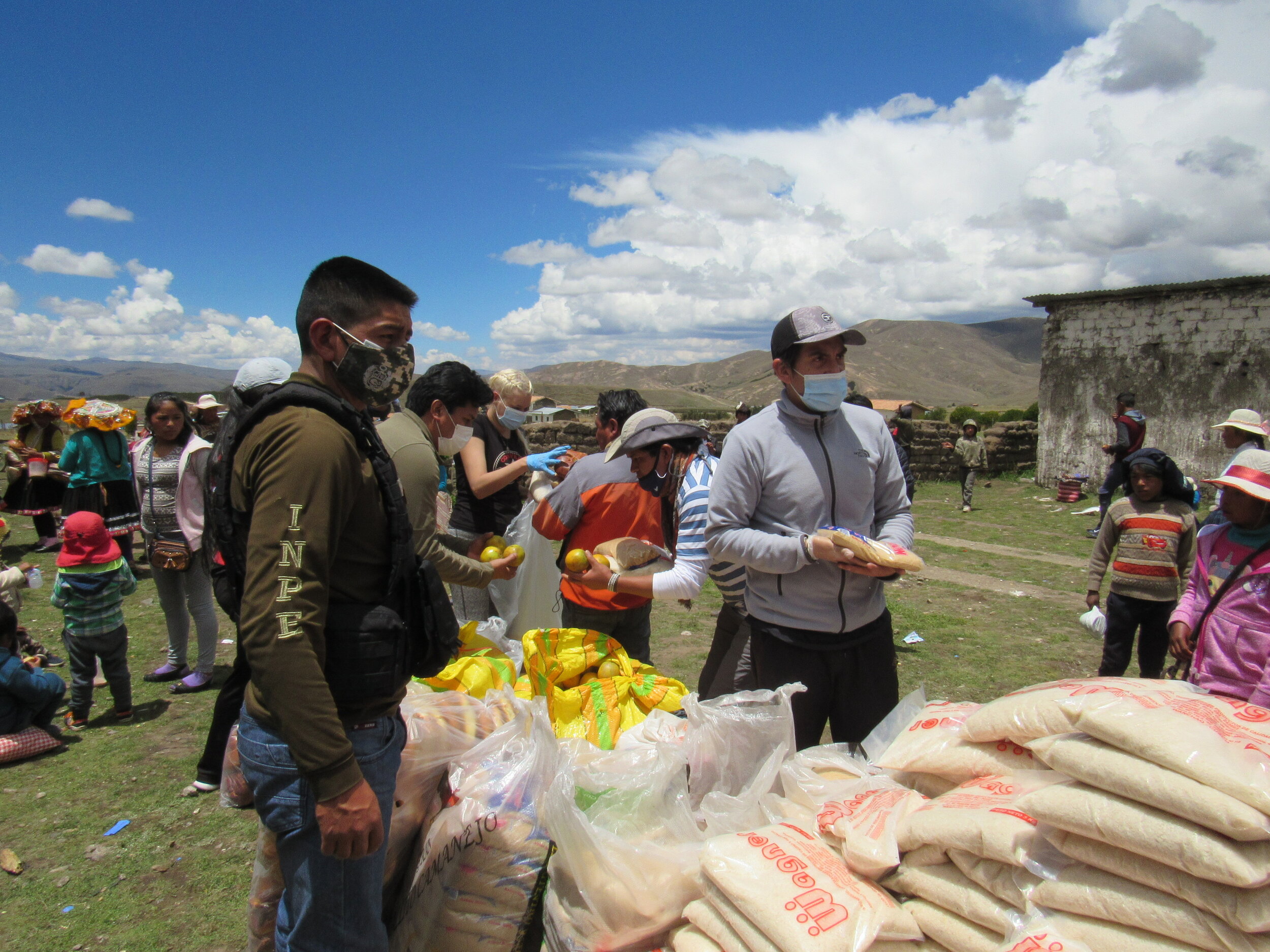
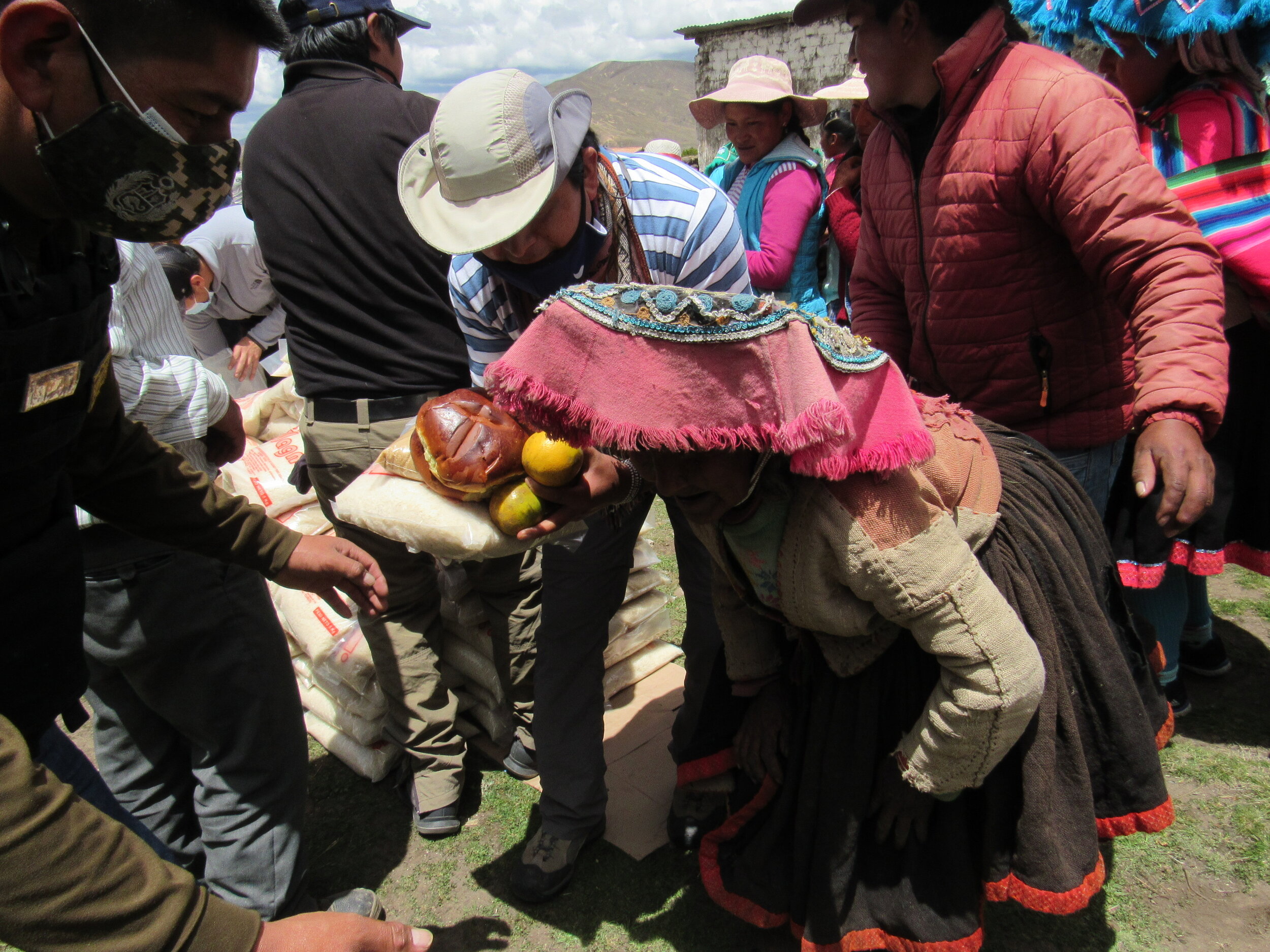
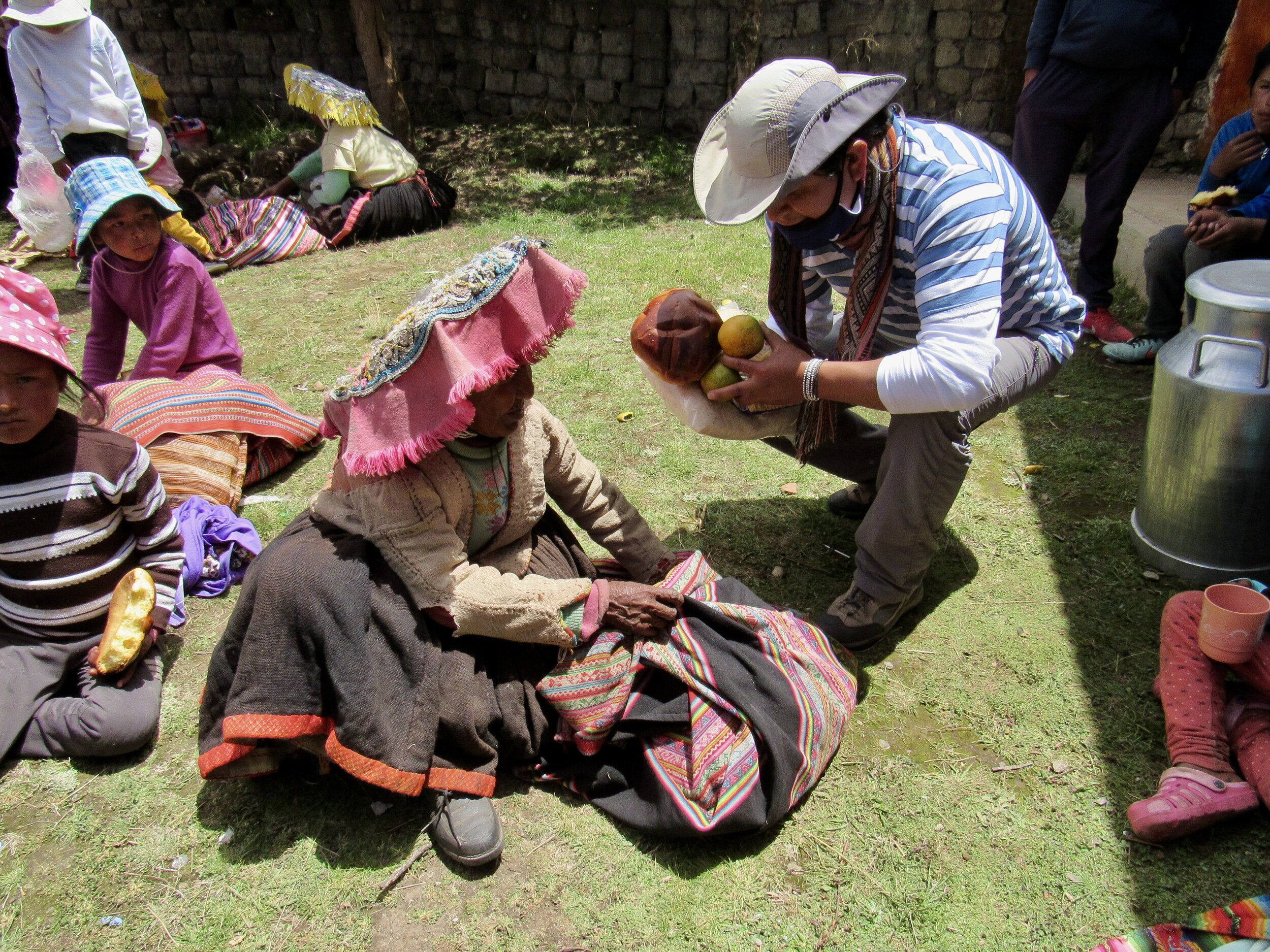


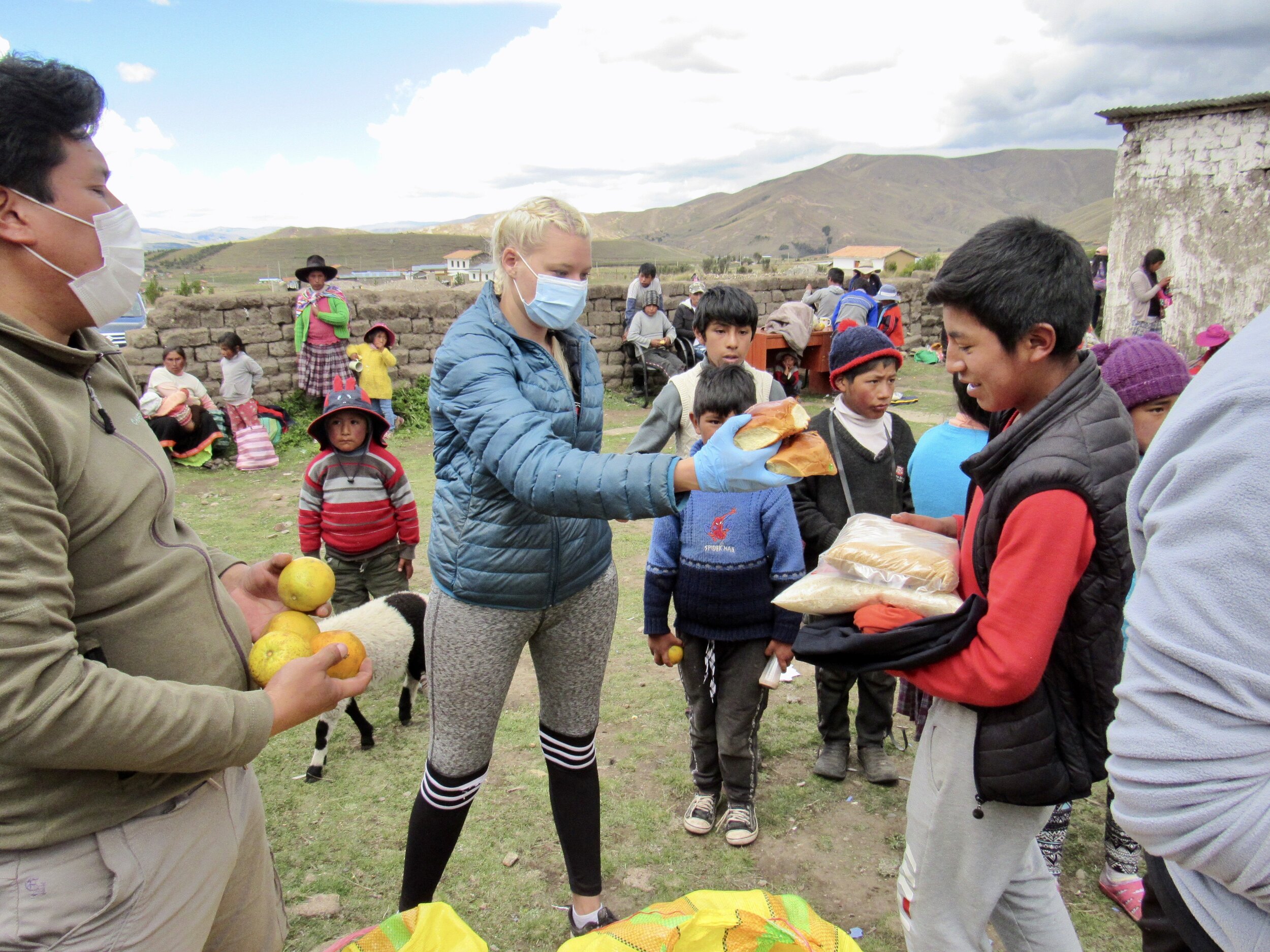
As both a show of gratitude and to help us get ready for the drive back to Cusco, the community served us a big tub of boiled potatoes and little pats of soft, fresh cheese. It’s always interesting to see what a community wants to share, or more like, what they have to share. This is the first time we’ve been given cheese and it was delicious. Cheese here is not cured with rennet. It’s more like fresh cheese curds. They add vinegar or lemon juice to the milk until it curdles, then squeeze out the extra liquid. Depending on how it’s made, it can be a lot like Indian paneer. After our lunch, we all piled into one car and headed home.
Coca
At the market in Ocongate, we bought two pounds of coca leaves before we drove to Marampaqui. The coca leaves are for the elderly people who come to the chocolatada. We have clothes for the kids and 4 kilos of rice and 2 kilos of sugar for the adults. I’ve felt like we’ve left out the village elders a bit in the past, so this time we made sure to have a little something for them too.
Coca leaves are chewed and give you the same effect as a cup of coffee and an ibuprofen. They’re great for headaches, or any kind of aches for that matter. Hence, their popularity with the elderly. They can also be used to make cocaine, but it takes about 600 kilos of leaves to make one kilo of “cocaine base,” according to Recovery.org. In my experience, the leaves themselves are much less addictive than coffee.
Coca leaves are also very sacred in all Andean traditions, despite the fact that they’re from the Amazon jungle, not the Andes. However, the harsh life in the Andes, especially living at high altitude, often requires medical assistance of some sort. The oldest medicine in South America is coca leaves and they have taken on special cultural significance because of what seems to be magical powers.
The logistics
We are still buying the food we donate from Wagner’s, where the owner Jorge gives us what he can at cost and arranges for us to pick up the supplies or delivers them to the Maytaq Wasin. The Maytaq Wasin Boutique Hotel continues to be our base of operations, where we store clothes and food that will be donated. Henry is working with a local baker and dairy farmer to get us freshly baked mini-panettone and 30 liter cans of fresh milk. The mayor of Ocongate arranged both transportation for us and lodging in Ocongate, so that we could do more of the drive Friday evening and be able to start the chocolatada earlier on Saturday.
Thank yous
I am so thankful for Kerry and Sair’s assistance on this trip! They are both hard workers and it was a joy to see Kerry playing with the children while we waited for the hot chocolate to be made. I really appreciate the support of Grimaldo Quispe, the mayor of Ocongate, who jumped in to hand out clothes or do anything else that was needed. His support of the Covid Relief Project also gave us a great team from his office who helped with everything from transportation and our lodging in Ocongate, to notifying families of the event and helping distribute donations. As always, I am so grateful for all of the countless hours of hard work that Auqui and Henry continue to put into this effort. We have taken this project so much farther than I could have hoped when we started back in May.

